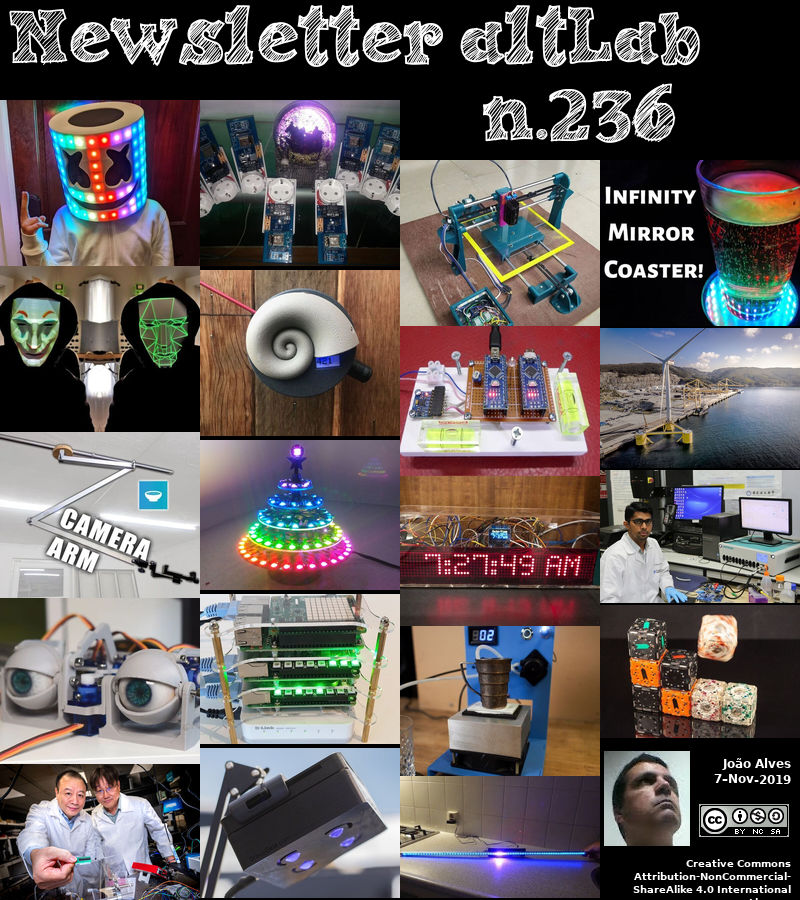2019-11-07 - Nº 236
Editorial
Esta é a Newsletter Nº 236 que se apresenta com o mesmo formato que as anteriores. Se gostar da Newsletter partilhe-a!
Todas as Newsletters encontram-se indexadas no link.
Esta Newsletter tem os seguintes tópicos:
Faz hoje anos que nascia, em 1867, Marie Curie. Esta química e física polaco-francesa ficou conhecida pelas suas célebres experiências sobre minerais de urânio levaram à descoberta de dois novos elementos. Primeiro ela separou o polónio e alguns meses depois o rádio. A quantidade de rádon em equilíbrio radioactivo com um grama de rádio foi denominada curie (redefinida posteriormente como a emissão de 3,7 x 1010 partículas alfa por segundo.) Com Henri Becquerel e seu marido, Pierre Curie, ela recebeu o Prémio Nobel de 1903 por Física. Mais tarde, ela também foi a única ganhadora do segundo Prémio Nobel em 1911, desta vez em Química. A sua família ganhou cinco prémios Nobel em duas gerações. Ela morreu de envenenamento por radiação devido ao seu trabalho pioneiro.
Faz também anos hoje que nascia, em 1878, Lise Meitner. Esta Física austríaco-sueca partilhou o prémio Enrico Fermi com os químicos Otto Hahn e Fritz Strassmann pela sua pesquisa conjunta iniciada em 1934 que levou à descoberta da fissão de urânio. Ela recusou-se a trabalhar na bomba atômica. Em 1917, com Hahn, ela descobriu o novo elemento radioactivo protactinium. Ela foi a primeira a descrever a emissão de electrões Auger. Em 1935, ela encontrou evidências de quatro outros elementos radioactivos correspondentes aos números atómicos 93-96. Em 1938, ela foi forçada a deixar a Alemanha nazi e foi para um posto na Suécia. O seu outro trabalho no campo da física nuclear inclui o estudo de raios beta e o estudo das três principais séries de desintegração. Mais tarde, ela usou o ciclotrão como uma ferramenta.
Por fim, faz anos hoje que nascia, em 1888 - Chandrasekhara Venkata Raman. Este físico indiano influenciou o crescimento da ciência na Índia com o seu trabalho. Ele ganhou o Prémio Nobel de Física de 1930 pela descoberta de 1928, agora chamada de espalhamento Raman: uma mudança na frequência observada quando a luz é espalhada num material transparente. Quando a luz monocromática ou a laser é passada através de um gás, líquido ou sólido transparente e é observada com o espectroscópio, a linha espectral normal associa-se a ela linhas de comprimento de onda mais longas e mais curtas, chamado espectro Raman. Tais linhas, causadas por fotões que perdem ou ganham energia em colisões elásticas com as moléculas da substância, variando com a substância. Assim, o efeito Raman é aplicado na análise química espectro-gráfica e na determinação da estrutura molecular.
Nesta semana que passou ficámos a saber que a maior turbina eólica flutuante do mundo, uma turbina eólica offshore classificada em ABS de 8,4 megawatt (MW), está prestes a ser instalada. É a primeira de três unidades do tipo submersível SEMI, classificadas em ABS, projectadas pela Principle Power que abriga turbinas MHI Vestas que conjugadas têm a capacidade total de 25 MWs de energia eólica offshore flutuante. Este é o primeiro parque eólico flutuante de grande escala da Europa continental, a 20 quilómetros da costa de Viana do Castelo em Portugal. O projeto é desenvolvido pelo consórcio Windplus, que é de propriedade conjunta da EDP Renováveis, ENGIE, Repsol e Principle Power Inc., e está calendarizado para entrar em operação no final de 2019.
Na Newsletter desta semana apresentamos diversos projetos de maker. É apresentado também o livro "Raspberry Pi Beginner’s Guide v3".
 João Alves ([email protected])
João Alves ([email protected])
O conteúdo da Newsletter encontra-se sob a licença  Creative Commons Attribution-NonCommercial-ShareAlike 4.0 International License.
Creative Commons Attribution-NonCommercial-ShareAlike 4.0 International License.
Novidades da Semana

ABS Classes World’s Biggest Floating Wind Turbine
"The largest floating wind turbine in the world, an 8.4-megawatt (MW) ABS-classed offshore wind turbine, is about to be installed. It is the first of three ABS-classed, SEMI Submersible Type units designed by Principle Power housing MHI Vestas turbines that will make up for a total of 25 MWs of floating offshore wind power. This is continental Europe’s first larger scale floating wind farm, 20 kilometers off the coast of Viana do Castello, Portugal. “ABS has supported innovation in offshore energy since 1958. This landmark installation underlines how we continue to support promising technology more than sixty years later,” said Christopher J. Wiernicki, ABS Chairman, President and CEO. “Floating turbines enable us to reach offshore wind resources in water that is too deep for conventional bottom-fixed turbines." [...]
Outras Notícias
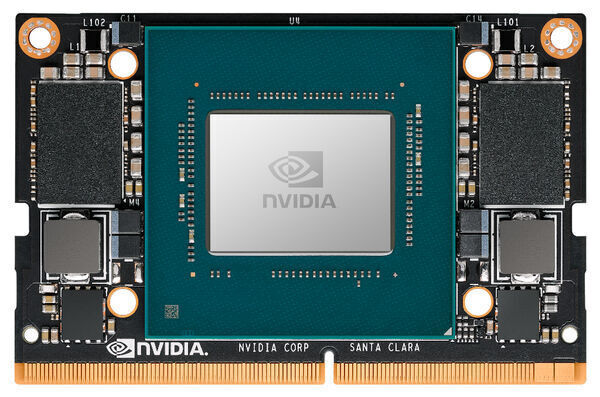
NVIDIA Announces Jetson Xavier NX, World’s Smallest Supercomputer for AI at the Edge
"Latest Addition to Jetson Product Family Brings Xavier Performance to Nano Form Factor for $399 NVIDIA today introduced Jetson Xavier™ NX, the world’s smallest, most powerful AI supercomputer for robotic and embedded computing devices at the edge. With a compact form factor smaller than the size of a credit card, the energy-efficient Jetson Xavier NX module delivers server-class performance up to 21 TOPS for running modern AI workloads, and consumes as little as 10 watts of power. Jetson Xavier NX opens the door for embedded edge computing devices that demand increased performance but are constrained by size, weight, power budgets or cost. These include small commercial robots, drones, intelligent high-resolution sensors for factory logistics and production lines, optical inspection, network video recorders, portable medical devices and other industrial IoT systems. “AI has become the enabling technology for modern robotics and embedded devices that will transform industries,” said Deepu Talla, vice president and general manager of Edge Computing at NVIDIA. “Many of these devices, based on small form factors and lower power, were constrained from adding more AI features." [...]
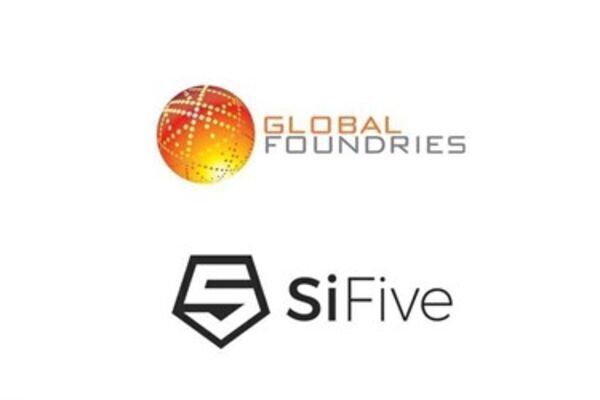
GLOBALFOUNDRIES and SiFive to Deliver Next Level of High Bandwidth Memory on 12LP Platform for AI Applications
"Next generation high bandwidth memory solution based on GF’s most advanced FinFET platform aims to deliver capacity, speed and power for cloud based AI Applications GLOBALFOUNDRIES® (GF®) and SiFive, Inc. announced today at GLOBALFOUNDRIES Technology Conference (GTC) in Taiwan that they are working to extend high DRAM performance levels with High Bandwidth Memory (HBM2E) on GF’s recently announced 12LP+ FinFET solution, with 2.5D packaging design services to enable fast time-to-market for Artificial Intelligence (AI) applications. In order to achieve the capacity and bandwidth for data-intensive AI training applications, system designers are challenged with squeezing more bandwidth into a smaller area while maintaining a reasonable power profile. SiFive’s customizable high bandwidth memory interface on GF’s 12LP platform and 12LP+ solution will enable easy integration of high bandwidth memory into a single System-on-Chip (SoC) solutions to deliver fast, power-efficient data processing for AI applications in the computing and wired infrastructure markets. As a part of the collaboration, designers will also have access to SiFive’s RISC-V IP portfolio and DesignShare IP ecosystem, which will leverage GF’s 12LP+ Design Technology Co-Optimization (DTCO), enabling them to significantly increase silicon specialization, improve design efficiency and deliver differentiated SoC solutions quickly and cost-effectively. “Extending SiFive’s reference IP platform, with HBM2E, on GF’s best-in-class performance 12LP+ solutiondelivers new levels of performance and integration for next generation SoCs and accelerators,” said Mohit Gupta, vice president and general manager, IP Business Unit at SiFive. “Deployment of highly optimized silicon requires highly customizable capabilities in order to realize the much-needed higher TOPS per milliwatt with low latency performance required for AI, while balancing the needs for low power and smaller area footprints.” “At GF, we continue our commitment to providing differentiated FinFET specific application solutions and IP that allow our clients to develop performance enhanced products for AI applications,” said Ted Letavic, CTO of Computing and Wired Infrastructure at GF." [...]

Voyager 2 Illuminates Boundary of Interstellar Space
"One year ago, on Nov. 5, 2018, NASA's Voyager 2 became only the second spacecraft in history to leave the heliosphere - the protective bubble of particles and magnetic fields created by our Sun. At a distance of about 11 billion miles (18 billion kilometers) from Earth - well beyond the orbit of Pluto - Voyager 2 had entered interstellar space, or the region between stars. Today, five new research papers in the journal Nature Astronomy describe what scientists observed during and since Voyager 2's historic crossing. Each paper details the findings from one of Voyager 2's five operating science instruments: a magnetic field sensor, two instruments to detect energetic particles in different energy ranges and two instruments for studying plasma (a gas composed of charged particles). Taken together, the findings help paint a picture of this cosmic shoreline, where the environment created by our Sun ends and the vast ocean of interstellar space begins. The Sun's heliosphere is like a ship sailing through interstellar space." [...]
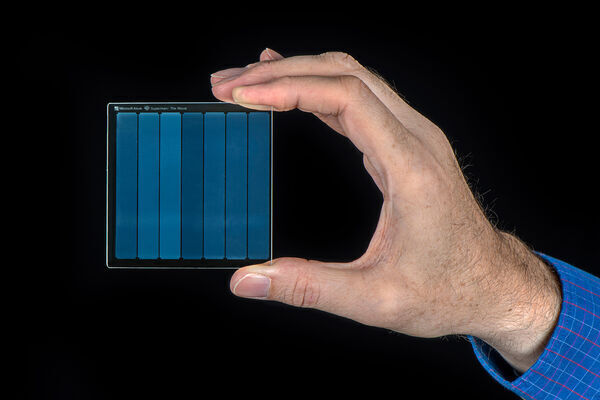
Project Silica proof of concept stores Warner Bros. ‘Superman’ movie on quartz glass
"Microsoft and Warner Bros. have collaborated to successfully store and retrieve the entire 1978 iconic “Superman” movie on a piece of glass roughly the size of a drink coaster, 75 by 75 by 2 millimeters thick. It was the first proof of concept test for Project Silica, a Microsoft Research project that uses recent discoveries in ultrafast laser optics and artificial intelligence to store data in quartz glass. A laser encodes data in glass by creating layers of three-dimensional nanoscale gratings and deformations at various depths and angles. Machine learning algorithms read the data back by decoding images and patterns that are created as polarized light shines through the glass. The hard silica glass can withstand being boiled in hot water, baked in an oven, microwaved, flooded, scoured, demagnetized and other environmental threats that can destroy priceless historic archives or cultural treasures if things go wrong. It represents an investment by Microsoft Azure to develop storage technologies built specifically for cloud computing patterns, rather than relying on storage media designed to work in computers or other scenarios." [...]

AMD Introduces World’s Fastest High-End Desktop Processors With 3rd Gen Ryzen Threadripper Family: Delivering Unmatched Performance With No Compromises
"Today, AMD announced the upcoming availability of powerful new additions to its high-end desktop processor family that deliver groundbreaking performance for creators, developers, and enthusiasts. Built to deliver leadership performance1,3 for the most demanding desktop and content creation workloads, the 24-core AMD Ryzen Threadripper 3960X and the 32-core AMD Ryzen Threadripper 3970X processors will be available worldwide November 25, 2019. “With our 3rd Gen AMD Ryzen Threadripper processors, AMD is once again raising the performance bar significantly for creators, developers, and PC enthusiasts,” said Saied Moshkelani, senior vice president and general manager, AMD Client Compute. “3rd Gen Ryzen Threadripper processors combine leadership performance and energy efficiency to create the ultimate high-end desktop solution. We are extremely excited to expand our leadership high-end desktop processor family and deliver the world’s fastest processors.” 3rd Gen AMD Ryzen Threadripper Processors: World’s Most Powerful Desktop Processors The 3rd Gen AMD Ryzen Threadripper lineup features two new processors built on industry-leading 7nm “Zen 2” core architecture, boasting up to 88 PCIe® 4.0 lanes and 144MB cache with extraordinary power efficiency. Achieving up to 90 percent faster performance over the competition’s top-end HEDT processor1, the new 32-core Ryzen Threadripper 3970X processor offers unsurpassed performance as the most powerful and fastest desktop processor1 in the high-end desktop market." [...]
Ciência e Tecnologia
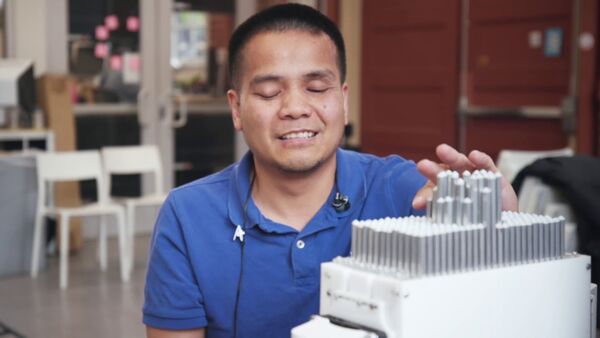
Stanford increasing access to 3D modeling through touch-based display
"Stanford researchers designed a tactile display that aims to make 3D printing and computer-aided design accessible to people who are blind and visually impaired. With the goal of increasing access to making, engineers at Stanford University have collaborated with members of the blind and visually impaired community to develop a touch-based display that mimics the geometry of 3D objects designed on a computer. Creating a 3D object with computer software is often the first step in producing it physically and can be burdensome for people who are blind or visually impaired. Even with 3D modeling software that has more accessible ways of inputting designs, they still have to evaluate their work by either creating a physical version they can touch or by listening to a description provided by a sighted person. “Design tools empower users to create and contribute to society but, with every design choice, they also limit who can and cannot participate,” said Alexa Siu, a graduate student in mechanical engineering at Stanford, who developed, tested and refined the system featured in this research. “This project is about empowering a blind user to be able to design and create independently without relying on sighted mediators because that reduces creativity, agency and availability.” This work is part of a larger effort within the lab of Sean Follmer, assistant professor of mechanical engineering, to develop tactile displays – displays that relay information through touch – for various purposes, such as human-computer interaction and new ways of sharing or explaining 3D information." [...]
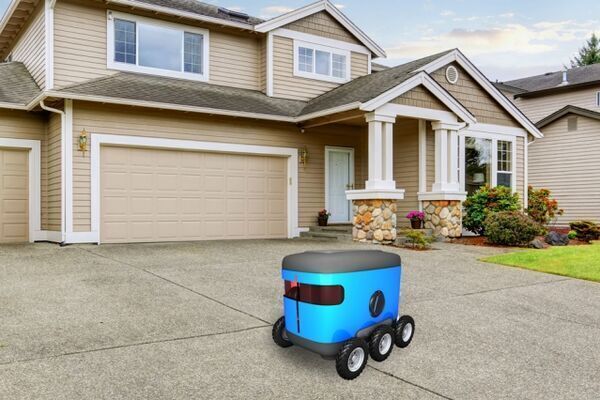
Technique helps robots find the front door
"Navigation method may speed up autonomous last-mile delivery. In the not too distant future, robots may be dispatched as last-mile delivery vehicles to drop your takeout order, package, or meal-kit subscription at your doorstep — if they can find the door. Standard approaches for robotic navigation involve mapping an area ahead of time, then using algorithms to guide a robot toward a specific goal or GPS coordinate on the map. While this approach might make sense for exploring specific environments, such as the layout of a particular building or planned obstacle course, it can become unwieldy in the context of last-mile delivery. Imagine, for instance, having to map in advance every single neighborhood within a robot’s delivery zone, including the configuration of each house within that neighborhood along with the specific coordinates of each house’s front door. Such a task can be difficult to scale to an entire city, particularly as the exteriors of houses often change with the seasons." [...]
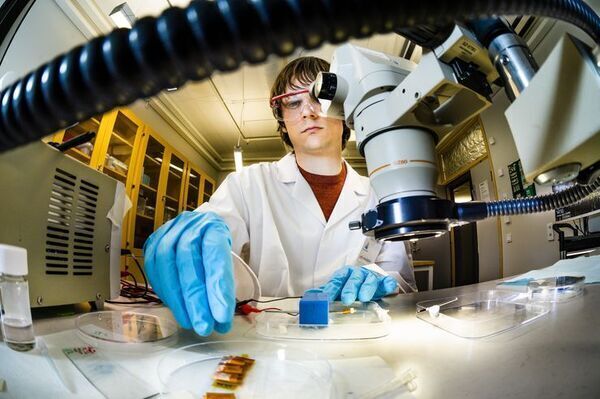
An electronic signal expands the material by a factor of 100
"Researchers at the Laboratory of Organic Electronics have discovered a material that can both increase and reduce its volume when exposed to a weak electrical pulse. In a sponge, or filter, the researchers can control the size of particles that pass through. Materials, such as solids and gels, that change volume depending on temperature or pH have long been available. Such materials are used in control units (one example of which are windows in greenhouses that automatically open and close depending on the temperature). They are also used in robots and in other electromechanical systems and in applications in biomedicine. One property that researchers have, however, long sought is the change of a material from a solid form to a gel state with the aid of an electrical signal." [...]

Next generation of watch springs
"What happens when something keeps getting smaller and smaller? This is the type of question Empa researcher Johann Michler and his team are investigating. As a by-product of their research completely novel watch springs could soon be used in Swiss timepieces. Applied research is not always initiated by industry – but oftentimes it yields results that can swiftly be implemented by companies. A prime example can be seen on the Empa campus in Thun: Tiny watch springs are on display at the Laboratory for Mechanics of Materials and Nanostructures. These springs – the beating heart of every mechanical clock – are not your usual components." [...]
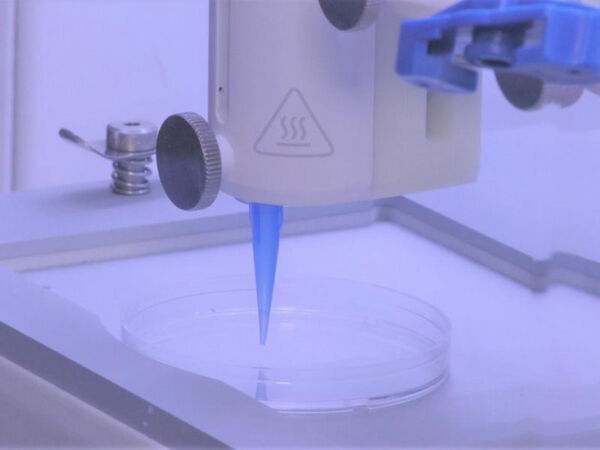
Living Skin Can Now be 3D-Printed With Blood Vessels Included
"Development is significant step toward skin grafts that can be integrated into patient’s skin Researchers at Rensselaer Polytechnic Institute have developed a way to 3D print living skin, complete with blood vessels. The advancement, published online today in Tissue Engineering Part A, is a significant step toward creating grafts that are more like the skin our bodies produce naturally. “Right now, whatever is available as a clinical product is more like a fancy Band-Aid,” said Pankaj Karande, an associate professor of chemical and biological engineering and member of the Center for Biotechnology and Interdisciplinary Studies (CBIS), who led this research at Rensselaer. “It provides some accelerated wound healing, but eventually it just falls off; it never really integrates with the host cells.” A significant barrier to that integration has been the absence of a functioning vascular system in the skin grafts. Karande has been working on this challenge for several years, previously publishing one of the first papers showing that researchers could take two types of living human cells, make them into “bio-inks,” and print them into a skin-like structure. Since then, he and his team have been working with researchers from Yale School of Medicine to incorporate vasculature." [...]
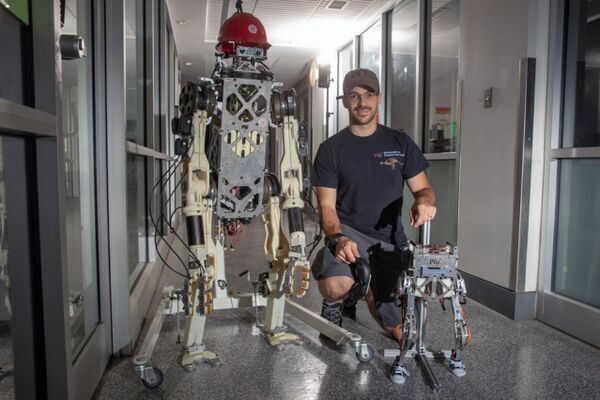
Two-legged robot mimics human balance while running and jumping
"New control system may enable humanoid robots to do heavy lifting and other physically demanding tasks. Rescuing victims from a burning building, a chemical spill, or any disaster that is inaccessible to human responders could one day be a mission for resilient, adaptable robots. Imagine, for instance, rescue-bots that can bound through rubble on all fours, then rise up on two legs to push aside a heavy obstacle or break through a locked door. Engineers are making strides on the design of four-legged robots and their ability to run, jump and even do backflips. But getting two-legged, humanoid robots to exert force or push against something without falling has been a significant stumbling block. Now engineers at MIT and the University of Illinois at Urbana-Champaign have developed a method to control balance in a two-legged, teleoperated robot — an essential step toward enabling a humanoid to carry out high-impact tasks in challenging environments." [...]
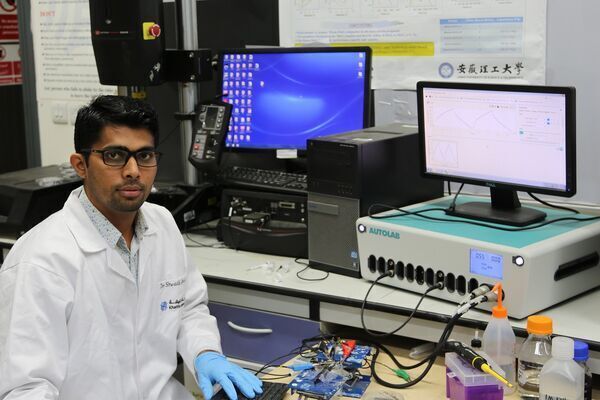
Wonders of 2D Materials & their 3D Nano-Architectures for Energy Storage
"Over the past decade, the UAE has demonstrated a serious commitment to the development of renewable and alternative energy, which is one of the pillars of the country’s economic diversification strategy. The empowerment of renewable energy technology and the rapid advancements in energy storage technologies will lead to significant improvements in our daily life. Batteries play a key role as an energy storage device to overcome the operational challenges caused by the intermittent nature of renewable energy, while advanced flexible energy storage solutions will allow for further miniaturization of portable electronic devices, including wearables. A major limitation to better electrochemical energy storage systems lies in the electrode. Electrodes are the places in every storage device i.e., battery or supercapacitor, where the chemical reactions occur and where the ions, or charged particles, are stored. Researchers around the world have been racing to develop high-performance electrode materials." [...]
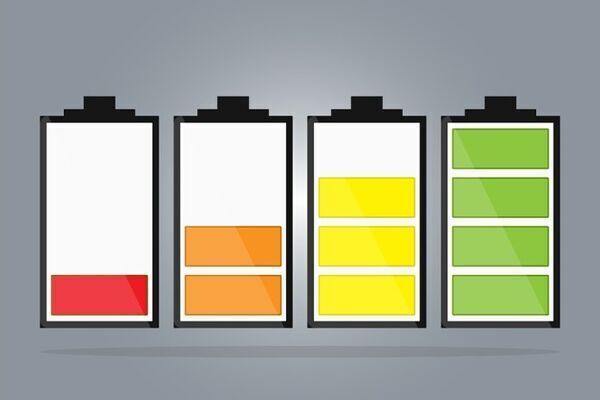
Fraunhofer begins setting up a new research facility for battery cell production
"Energy storage systems are of crucial importance to all sectors of industry involved in the energy and mobility transition. The idea behind Germany’s ‘Forschungsfertigung Batteriezelle’ is to create a development center for battery cell production that will serve the whole of Germany. Known by its German abbreviation FFB, the new battery cell research facility will close the current gap in the value chain of primary and rechargeable batteries and eliminate the need to depend on other markets. The project team, which consists of the Fraunhofer-Gesellschaft and its research partners, is now embarking on the first steps to put the FFB concept into practice at the chosen location of Münster in the federal state of North Rhine-Westphalia. Over the past decade, Germany has regained its standing at the top of the international battery research league. Despite this, there continues to be widespread reluctance among German industrial concerns to enter the realm of high-volume battery cell production." [...]

Promising discovery could lead to a better, cheaper solar cell
"Scientific instrument made at McGill reveals liquid-like properties of a solid substance McGill University researchers have gained tantalizing new insights into the properties of perovskites, one of the world’s most promising materials in the quest to produce a more efficient, robust and cheaper solar cell. In a study published today in Nature Communications, the researchers used a multi-dimensional electronic spectrometer (MDES) – a unique instrument hand-built at McGill – to observe the behaviour of electrons in cesium lead iodide perovskite nanocrystals. The MDES that made these observations possible is capable of measuring the behaviour of electrons over extraordinarily short periods of time – down to 10 femtoseconds, or 10 millionths of a billionth of a second. Perovskites are seemingly solid crystals that first drew attention in 2014 for their unusual promise in future solar cells that might be cheaper or more defect tolerant. A most exciting discovery “It’s the most exciting result that I have been a part of since starting in science in 1995,” said senior author and McGill chemistry professor Patanjali Kambhampati of the discovery of perovskite’s liquid-solid duality. “Instead of searching for perfection in defect-free silicon microelectronics, here we have a defective thing that’s defect-tolerant." [...]
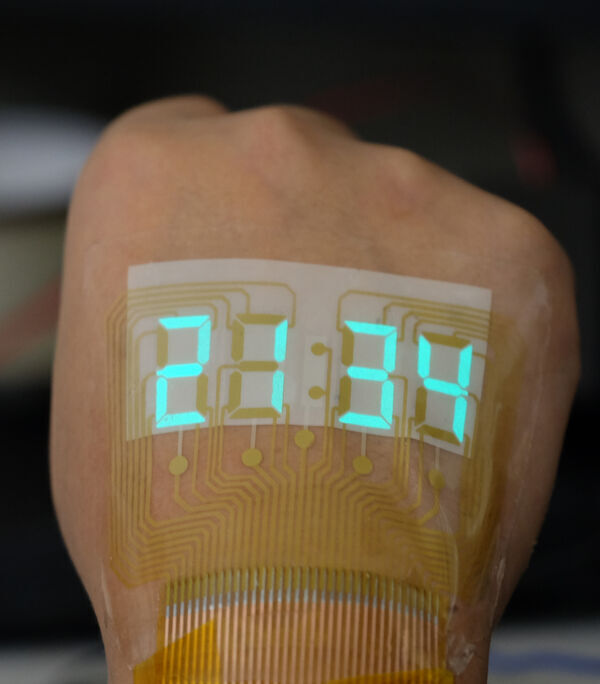
A stretchable stopwatch lights up human skin
"Imagine a runner who doesn’t need to carry a stopwatch or cell phone to check her time: She could just gaze at the glowing stopwatch display on the back of her hand. Such human-machine interfaces are no longer science fiction, but they still have a way to go before becoming mainstream. Now, researchers reporting in ACS Materials Letters have developed a stretchable light-emitting device that operates at low voltages and is safe for human skin. Recently, scientists have developed stretchable light-emitting devices called alternating-current electroluminescent (ACEL) displays that can be stuck on skin or other surfaces like a temporary tattoo. However, the displays require relatively high voltages to achieve sufficient brightness, which could create safety concerns. So, Desheng Kong and colleagues wanted to develop an ACEL that could operate at lower voltages and thus be safer for human skin." [...]
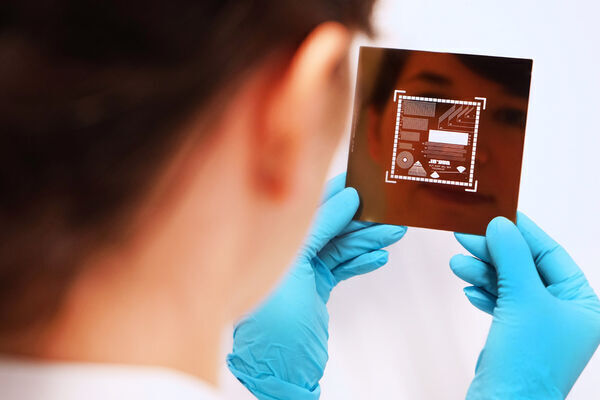
Photostructurable pastes for 5G applications
"For many years now, miniaturization has been the main driver of the electronics industry. This is particularly true for ceramic-based circuit boards, which have properties that make them especially suitable for high-frequency circuits. Increasingly demanding technical requirements have exposed the limits of the classic thick-film technologies used for the production of circuit-board conductors. Now, however, a new generation of thick-film pastes and their photolithographic structuring enable the manufacturing of extremely high-resolution thick-film structures necessary for 5G applications. Moreover, this process is suitable for mass production and industrial applications while maintaining low investment costs and only minimally extending production times. Researchers from the Fraunhofer Institute for Ceramic Technologies and Systems IKTS exhibit the new pastes at the Productronica trade fair in Munich from November 12 to 15 (Hall B2, Booth 228)." [...]

Researchers Use 3D Printing to Make Glass Optical Fiber Preform
"New approach greatly simplifies silica fiber fabrication, enabling new designs and applications Researchers have developed a way to use 3D printing to create a preform that can be drawn into silica glass optical fibers, which form the backbone of the global telecommunications network. This new fabrication method could not only simplify production of these fibers but also enable designs and applications that weren’t possible before. “Making silica optical fiber involves the labor-intensive process of spinning tubes on a lathe, which requires the fiber’s core or cores to be precisely centered,” explained John Canning who led the research team from the University of Technology in Sydney. “With additive manufacturing, there’s no need for the fiber geometry to be centered. This removes one of the greatest limitations in fiber design and greatly reduces the cost of fiber manufacturing.” In The Optical Society (OSA) journal Optics Letters, Canning’s group in collaboration with Gang-Ding Peng’s research team at the University of New South Wales in Sydney report the first silica glass fibers drawn from 3D printed preforms. “Additive manufacturing approaches such as 3D printing are well suited to change the entire approach to fiber design and purpose,” said Canning." [...]
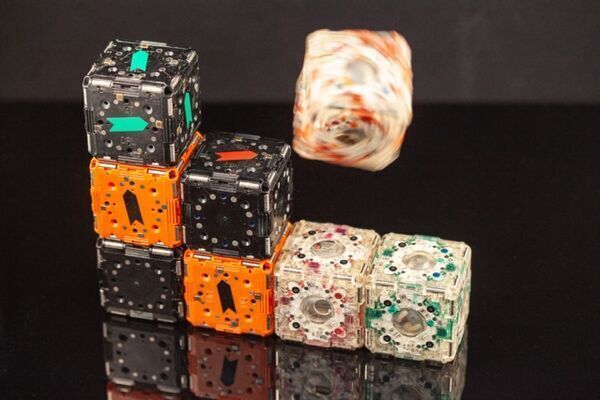
Self-transforming robot blocks jump, spin, flip, and identify each other
"Developed at MIT’s Computer Science and Artificial Intelligence Laboratory, robots can self-assemble to form various structures with applications including inspection. Swarms of simple, interacting robots have the potential to unlock stealthy abilities for accomplishing complex tasks. Getting these robots to achieve a true hive-like mind of coordination, though, has proved to be a hurdle. In an effort to change this, a team from MIT’s Computer Science and Artificial Intelligence Laboratory (CSAIL) came up with a surprisingly simple scheme: self-assembling robotic cubes that can climb over and around one another, leap through the air, and roll across the ground. Six years after the project’s first iteration, the robots can now “communicate” with each other using a barcode-like system on each face of the block that allows the modules to identify each other. The autonomous fleet of 16 blocks can now accomplish simple tasks or behaviors, such as forming a line, following arrows, or tracking light." [...]
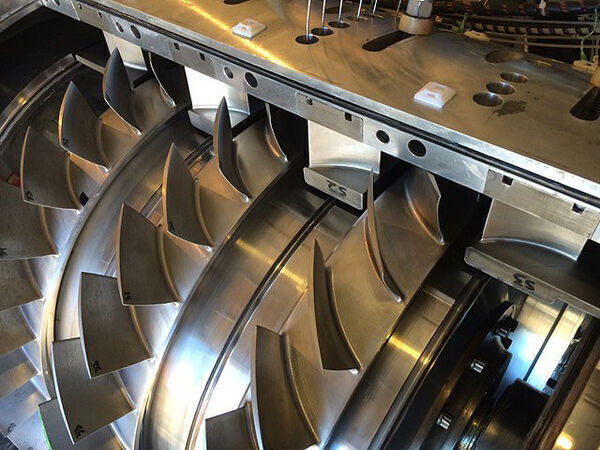
‘Listening’ to engine blades to stop failures, disasters
"The roar of a jet or race car engine can nearly take one’s breath away. Now imagine trying to hear through all that noise to pinpoint a problem with the engine – and stop a potentially disastrous failure. Purdue University researchers have developed a monitoring system to detect one of the most common causes of premature blade failure in gas turbine engines – rotor forced response vibration. These vibrations can be so intense at times that they affect the ability of the engine to function correctly. “Our technology is a blade vibration monitoring system using multiple unsteady pressure sensors to listen to the specific sound signature of gas turbine engine blade vibration,” said Yujun Leng, a research scientist in Purdue’s College of Engineering. “The flow field inside a gas turbine engine is very complicated and noisy." [...]
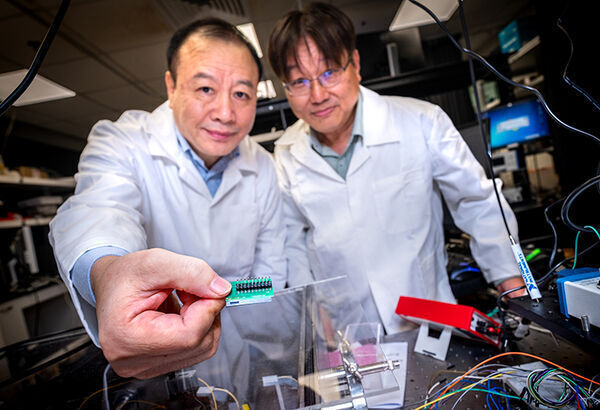
NTU Singapore researchers develop quantum communication chip 1,000 times smaller than current setups
"Researchers at Nanyang Technological University, Singapore (NTU Singapore) have developed a quantum communication chip that is 1,000 times smaller than current quantum setups, but offers the same superior security quantum technology is known for. Most leading security standards used in secure communication methods – from withdrawing cash from the ATM to purchasing goods online on the smartphone – does not leverage quantum technology. The electronic transmission of the personal identification number (PIN) or password can be intercepted, posing a security risk. Roughly 3mm in size, the tiny chip developed by NTU scientists uses quantum communication algorithms to provide enhanced security compared to existing standards. It does this by integrating passwords within the information that is being delivered, forming a secure ‘quantum key’. After the information is received, it is destroyed along with the key, making it an extremely secure form of communication." [...]
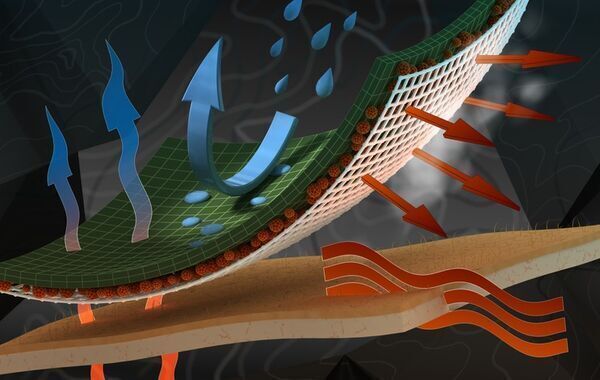
Improving Membranes in Water Desalination with 3D Printed Feed Spacers
"A new type of 3D-printed feed spacer could make membrane-based seawater desalination processes, such as reverse osmosis and ultrafiltration, more efficient, according to new findings by researchers at Khalifa University’s Center for Membranes and Advanced Water Technology (CMAT). The feed spacers, designed and manufactured with the help of 3D printing to achieve complex geometries and sizes, are described most recently in the Journal of Membrane Science, by a team led by KU’s Dr. Hassan Arafat, Professor of Chemical Engineering and Director of CMAT. The team also includes professors Rashid Abu Al-Rub, Hector Hernandez and Giovanni Palmisano as well as researchers Oraib Al-Ketan, N. Sreedhar Navya Thomas and Mahendra Kumar. The KU team collaborated with Dr. Reza Rowshan, Executive Director of Core Technology Platforms Operations at NYU Abu Dhabi, to print the feed spacers using the 3D printer available at NYUAD’s Core Technology Platforms facility. A patent has been filed on the new feed spacer design with the US Patent and Trademark Office. “Feed spacers play an important role in promoting turbulence of the feed water, which then affects the water flux, an indication of how efficiently the water flows through the membrane, which has a direct impact on the power consumption in desalination plants, especially those that use reverse osmosis processes,” explained Dr. Arafat." [...]
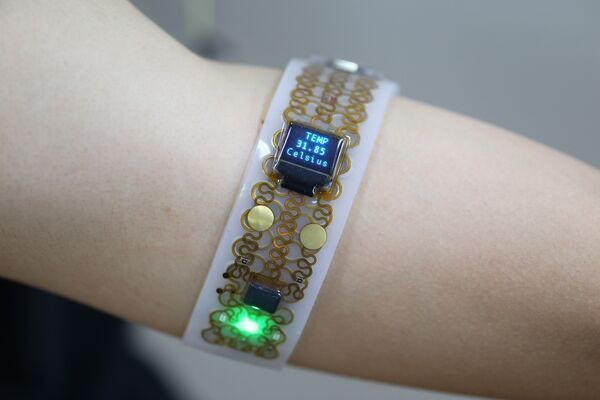
Transformative Electronics Systems to Broaden Wearable Applications
"Imagine a handheld electronic gadget that can soften and deform when attached to our skin. This will be the future of electronics we all dreamed of. A research team at KAIST says their new platform called 'Transformative Electronics Systems' will open a new class of electronics, allowing reconfigurable electronic interfaces to be optimized for a variety of applications. A team working under Professor Jae-Woong Jeong from the School of Electrical Engineering at KAIST has invented a multifunctional electronic platform that can mechanically transform its shape, flexibility, and stretchability. This platform, which was reported in Science Advances, allows users to seamlessly and precisely tune its stiffness and shape. "This new class of electronics will not only offer robust, convenient interfaces for use in both tabletop or handheld setups, but also allow seamless integration with the skin when applied onto our bodies," said Professor Jeong." [...]
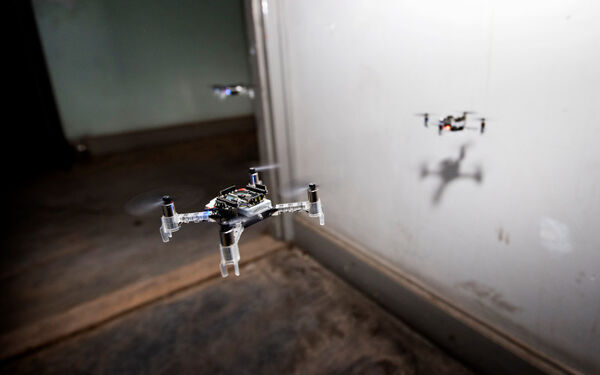
Swarm of tiny drones explores unknown environments
"Researchers have presented a swarm of tiny drones that can explore unknown environments completely by themselves. This work, presented in Science Robotics on 23 October, forms a significant step in the field of swarm robotics. The challenge comes from the fact that the tiny 33-gram drones need to navigate autonomously while having extremely limited sensing and computational capabilities. The joint research team – with researchers from TU Delft, University of Liverpool and Radboud University of Nijmegen – tackled this challenge by drawing inspiration from the relative simplicity of insect navigation. Inspiration from nature Insect swarms have inspired roboticists to think that small robots may also be able to overcome their individual limitations by operating in a swarm. Swarms of small and cheap robots would be able to perform tasks that are currently out of reach of large, individual robots." [...]
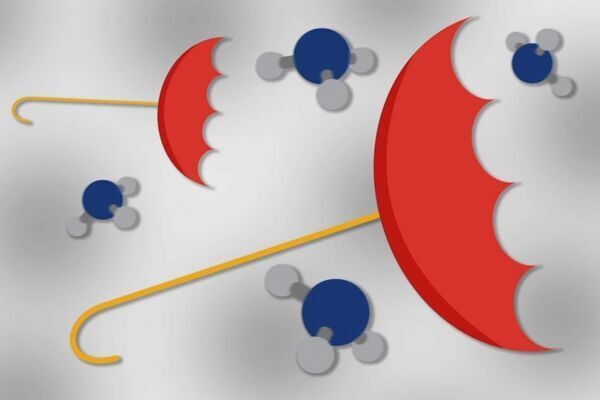
Chemists observe “spooky” quantum tunneling
"Extremely large electric fields can prevent umbrella-shaped ammonia molecules from inverting. A molecule of ammonia, NH3, typically exists as an umbrella shape, with three hydrogen atoms fanned out in a nonplanar arrangement around a central nitrogen atom. This umbrella structure is very stable and would normally be expected to require a large amount of energy to be inverted. However, a quantum mechanical phenomenon called tunneling allows ammonia and other molecules to simultaneously inhabit geometric structures that are separated by a prohibitively high energy barrier. A team of chemists that includes Robert Field, the Robert T. Haslam and Bradley Dewey Professor of Chemistry at MIT, has examined this phenomenon by using a very large electric field to suppress the simultaneous occupation of ammonia molecules in the normal and inverted states. “It’s a beautiful example of the tunneling phenomenon, and it reveals a wonderful strangeness of quantum mechanics,” says Field, who is one of the senior authors of the study." [...]
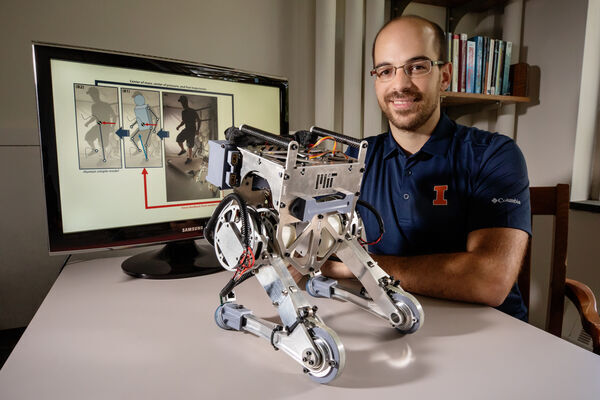
Human reflexes keep two-legged robot upright
"Imagine being trapped inside a collapsed building after a disaster, wondering if anybody will be brave enough to rescue you. Suddenly, a door bursts open, and standing in the shadows is a robot. But this is not just any robot; this one has quick, humanlike reflexes and is guided by a person from a remote location who feels the same physical forces the robot is experiencing. Engineers from the University of Illinois and the Massachusetts Institute of Technology are a step closer to human-operated robotics with their two-legged unit, named Little Hermes, which can walk, run, jump and interact with the environment in synchrony with a human operator. João Ramos, a U. of I. mechanical science and engineering professor and former MIT researcher, collaborated with professor Sangbae Kim at MIT to develop Little Hermes, a small-scale bipedal robot designed to go places deemed unsafe for humans. The researchers report their findings in the journal Science Robotics." [...]
Documentação
A documentação é parte essencial do processo de aprendizagem e a Internet além de artigos interessantes de explorar também tem alguma documentação em formato PDF interessante de ler. Todos os links aqui apresentados são para conteúdo disponibilizado livremente pelo editor do livro.
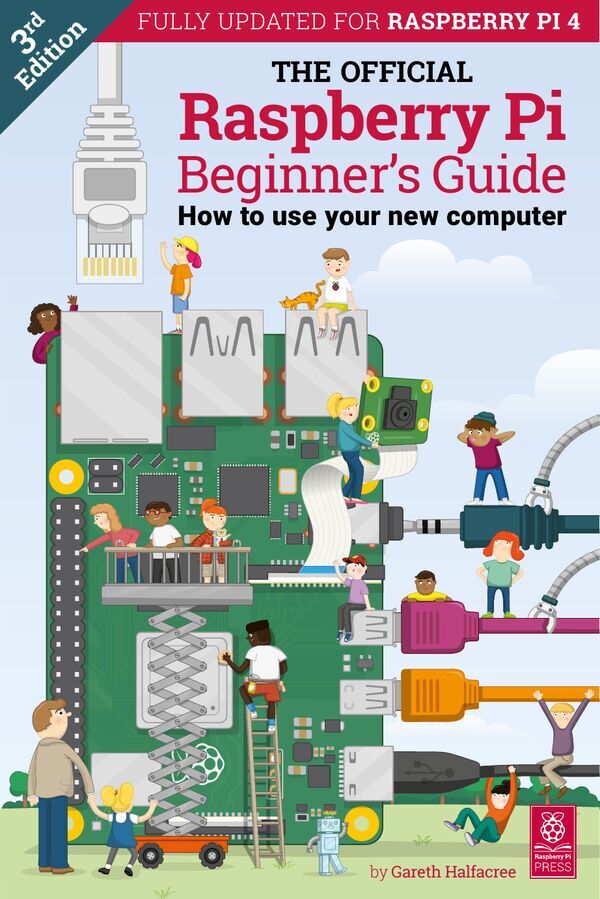
Raspberry Pi Beginner’s Guide v3
"Fully updated for Raspberry Pi 4 and latest software, including Scratch 3, this 252-page official Raspberry Pi book is crammed with projects and beginner’s guides containing all the information you need to get started using your new computer! Learn how to set up your Raspberry Pi, install an operating system, and start using it. Follow step-by-step guides to code your own animations and games, using both the Scratch 3 and Python languages. Create amazing projects by connecting electronic components to Raspberry Pi’s GPIO pins. Plus much, much more! 252 pages of essential information: Set up your Raspberry Pi, install its operating system, and start using this tiny, fully functional computer." [...]
Projetos Maker
Diversos Projetos interessantes.
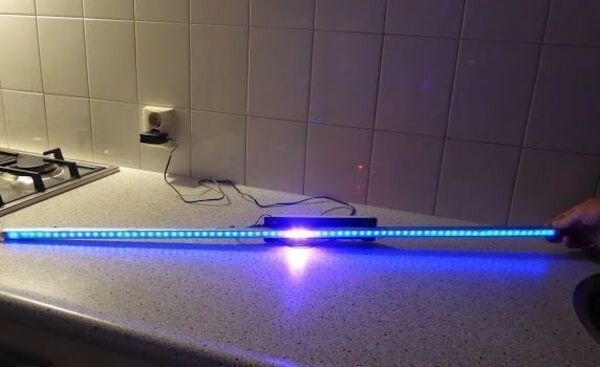
LEDs and Gravity ?
"This project has no practical use at all, but was initiated as an exercise in implementing physics formulas related to gravity in C-code on an Arduino. To make things visible, a neopixel LED-strip with 74 LEDs was used. The effect of the gravitational acceleration on an object is demonstrated by using a MPU-6050 accelerometer and gyroscope chip. This chip is physically attached to the LED-strip, so when the LED-strip is held at a certain angle, the chip measures the angle of the LED strip and the Arduino uses this information to update the position of a virtual object as if it was a ball that is balanced on a beam and rolls from one side to the other if the beam is held at an angle. The position of the virtual object is indicated on the LED strip as a single LED that is illuminated. To update the position of a virtual object that is falling to the earth under the influence of gravity, we use the formula : y = y0 + (V0 * t) + (0.5 * a * t^2) With : y = travelled distance in meters y0 = start distance in meters v0 = start velocity in meters/second a = acceleration (gravity) in meters/second^2 t = time in seconds" [...]

DIY Room Thermometer Using an OLED Module
"We learn how to build a room thermometer using the DS18B20 sensor and an OLED module. We use a Piksey Pico as the main board but the sketch is also compatible with the Arduino UNO and Nano boards so you could use those as well. " [...]
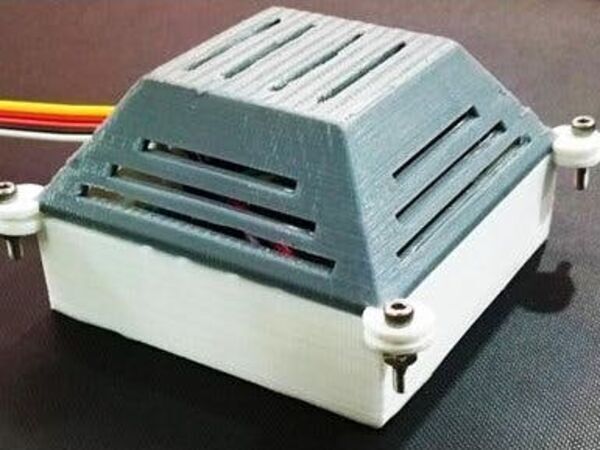
Atmospheric Air Analyser
"A low cost air quality monitoring device created with an aim to detect pollution hotspots caused due to traffic jams or factory emissions. Foreword The journey of this project began during a 'Design Thinking' project with a motive to design a system for measurement of localized Air Quality data for detecting pollution hotspots and alerting commuters of the same. The idea was to deploy large number of low cost devices across a geographic location to get this data, analyze it and use it for traffic management and city planning. Although quite visionary and ambitious, this project received a lot of appreciation at various levels and fared well in various competitions, it couldn't really move into the implementation phase. Lack of funds, expertise and less access to technology, hampered the progress of the project. However, I decided to publish this project (although fairly late - had developed this in 2018), as an attempt to inspire interested hacksters, to not just encourage learning but also hope for people to take it forward." [...]
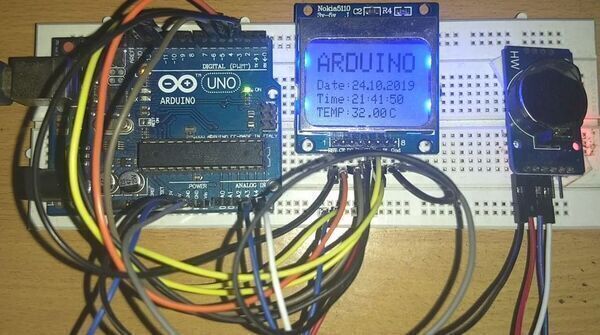
Simple Arduino Watch
"Hello guys and welcome to a new instructable. Today we will make a simple arduino watch using DS3231 and Nokia 5110 Lcd. This watch will of-course show you time but also it will also show date and temperature. Most of the tutorials online don't show how to use a lcd other than the 16*2 lcd with the RTC module. So I decided to make one tutorial with the 5110 Lcd. Let's move further to see how to make this watch." [...]
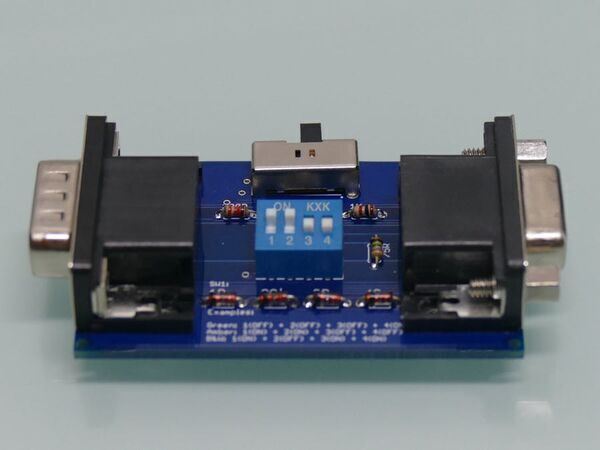
MonochromeVGA
"Turn your monitor into a monochrome one of yesteryear. MonochromeVGA is a product to enjoy the charm of those monochrome monitors of the time but in the current video systems, and more specifically in your PC monitor. Although it could be connected to any TV, monitor or video system that has VGA inputs. Select green, amber or B&W as monochromatic color, among others. Change color to monochrome or vice versa easily.Standard monochrome vintage monitors configurations: Green: Only green at 100% of intensity Amber: Red at 100% + Green at 75% B&W: Red + Green + Blue, all at 100% Connecting it directly in a VGA output, it will bridge and convert the RGB signals to a passive equivalent luminance value with a few resistors, then you just have to select the monochrome output by combining the primary colors red, green and blue using the some buttons. The luminance is calculated passively and approximately to the following formula: 0.2126*R + 0.7152*G + 0.0722*B" [...]
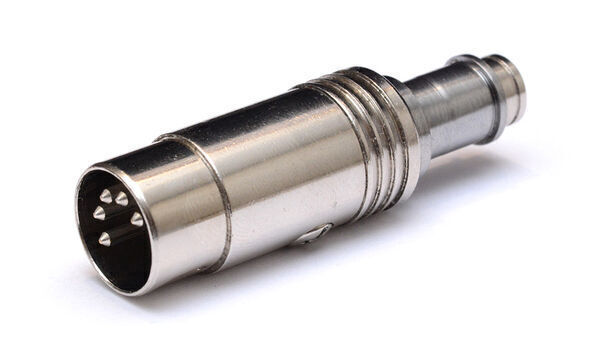
Flash Synth
"A tiny, powered-by-MIDI, polyphonic FM synthesizer that supports full resolution pitchbend and microtonal tunings. " [...]
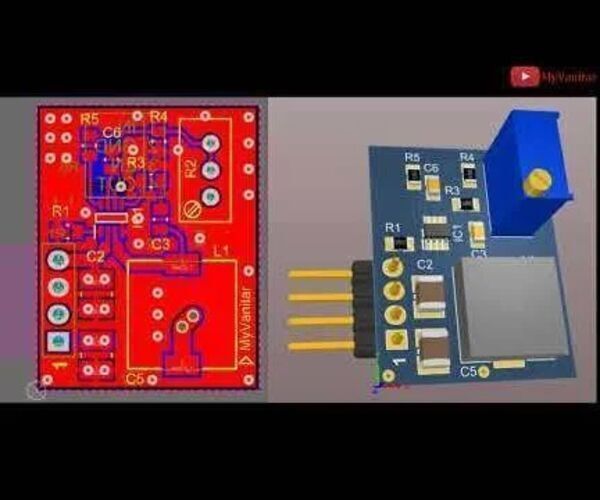
97% Efficient DC to DC Buck Converter - 3A, Adjustable
"A tiny DC to DC buck converter board is useful for many applications, especially if it could deliver currents up to 3A (2A continuously without heatsink). In this article, we will learn to build a small, efficient, and cheap buck converter circuit. " [...]
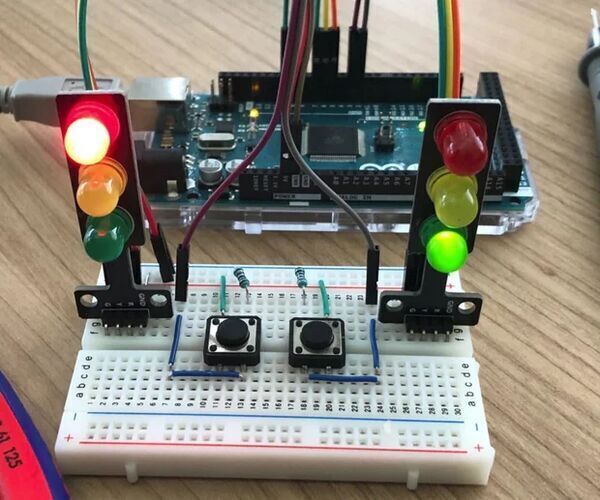
State Machine on Arduino - a Pedestrian Traffic Light
"Hey there!I'm going to show you how to program a pedestrian traffic light for Arduino in C++ with a finite state machine by using YAKINDU Statechart Tools. This will demonstrate the power of state machines and can be used as a blueprint for further projects. Supplies:You only need an Arduino, some pushbuttons, LEDs, Jumper and resistors. Hardware - 2x Pushbutton - 2x Traffic Lights or you can use LEDs with 220 Ohm resistors - 2x 10k Ohm resistors - Breadboard - Jumper - Arduino Uno/Mega (or any other, that got at least 8 GPIOs) Software - YAKINDU Statechart Tools - Eclipse C++ IDE for Arduino" [...]
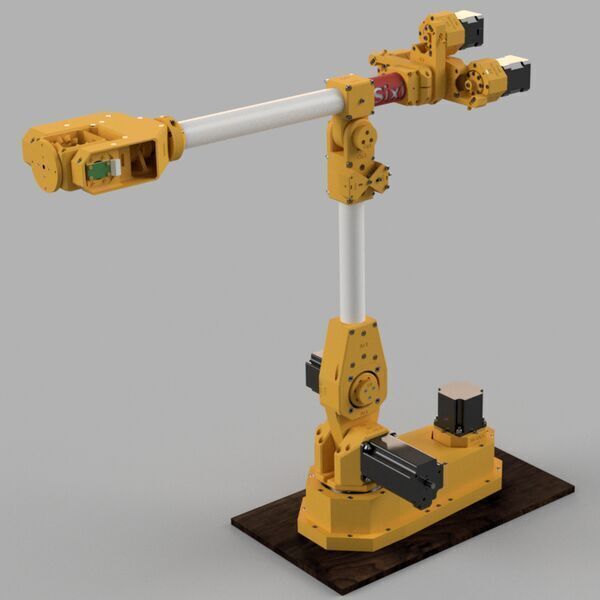
Sixi 2
"Open hardware, 3D printed, 6 axis robot arm If the robots take all the jobs, only the robot owners will have power. In order to ensure democracy, the robots must be owned by the people. Open source robots are a must. The most important robot I can make is a helping hand. I aim to make Marginally Clever Robots, Ltd. into the Prusa of robot arms. We will make an arm so good it can build its siblings (aka 'eat your own dog food')." [...]

Marshmello LED Helmet
"I love Halloween! Making costumes for my kids is a lot of fun. Every year they pick a character or theme and I ask, "How much of it can we 3D print and do you want to add LEDs?" This year was the electronic music producer and DJ, Marshmello. This Marshmello Helmet uses a concrete form tube as the base with 3D printed grid components framed around the outside of the form tube. LEDs are used in each square and the entire helmet is wrapped in a flexible translucent PE sheet." [...]
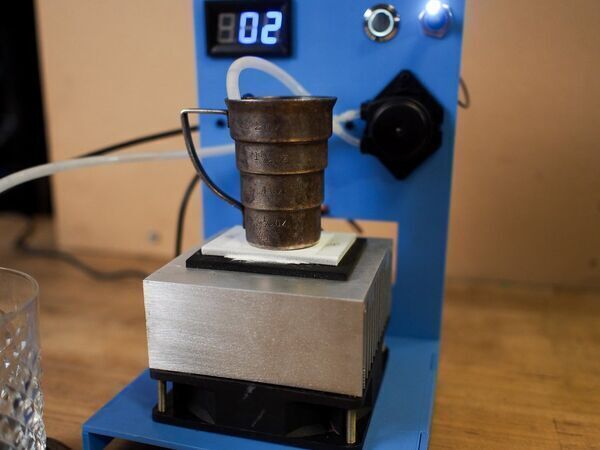
Build A Peltier Coaster To Keep Your Coffee Warm — Or Cold
"A Cold junction In 1798, Jean Charles Athanase Peltier was just 13 years old and although he came from a poorly educated family in rural France, people already were beginning to notice the youngster’s intellectual talents. Besides being an avid reader of nearly any book he could get hold of, Peltier showed an aptitude for fixing clocks. His family was too poor to continue his general education so his father apprenticed him to a clockmaker. Young Peltier found his master, Monsieur Brown, to be extremely unpleasant and extraordinarily controlling. Brown forbade Peltier to educate himself in anything apart from clockmaking. But at night Peltier would clandestinely read by candlelight." [...]
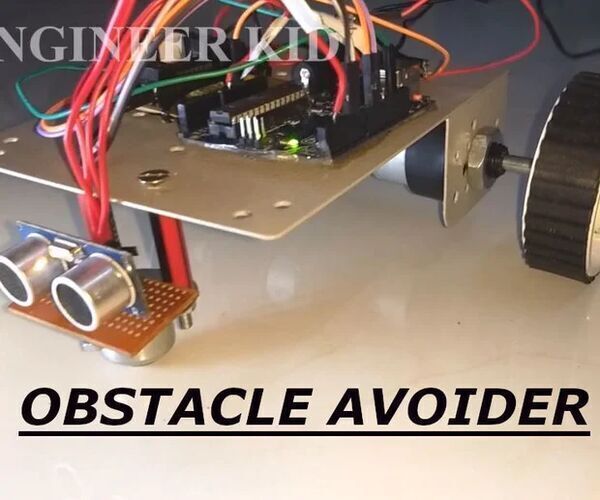
Obstacle Avoider Robot
"Hello guys and welcome to another instructable. Today we will make an obstacle avoiding robot. This a beginner level project every person should try once they get their Arduino. I will share all the details about this project further so don't forget to give this instructable a "Heart". " [...]
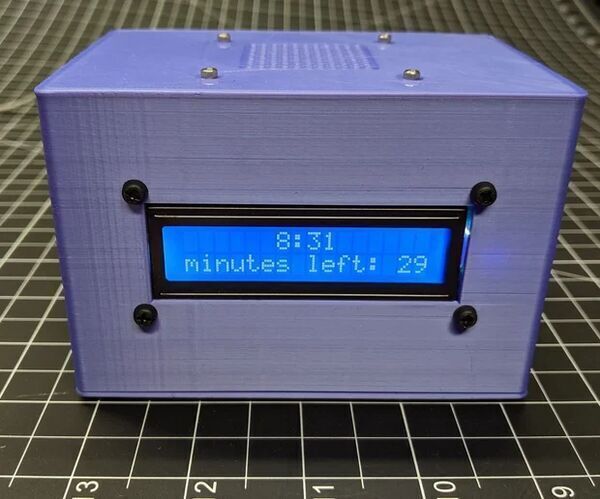
30-minute Timer Alarm Clock
"A friend is starting a small business that rents a resource for 30 minute time slots.She looked for a timer that could alarm every 30 minutes (on the hour and half hour) with a pleasant gong sound, but couldn't find anything. I offered to create a simple Arduino-based alarm clock. This design uses a Pro Micro microcontroller, DFPlayer Mini MP3 player, and a DS3231 real-time clock (RTC.) I used Fusion 360 to design the case, based on the Fusion 360 Tutorial – Easy Snap Fit Cases! Supplies: Arduino Pro Micro, 5 volt, 16 MHz DFPlayer Mini MP3 player MicroSD card DS3231RTC 1602 16x2 LCD with I2C Interface small speaker 2 small SPST pushbuttons 5 volt DC power supply Barrel jack for power input various screws/standoff/nuts, etc. perf board female and male 2.54mm headers 3D-printed case" [...]
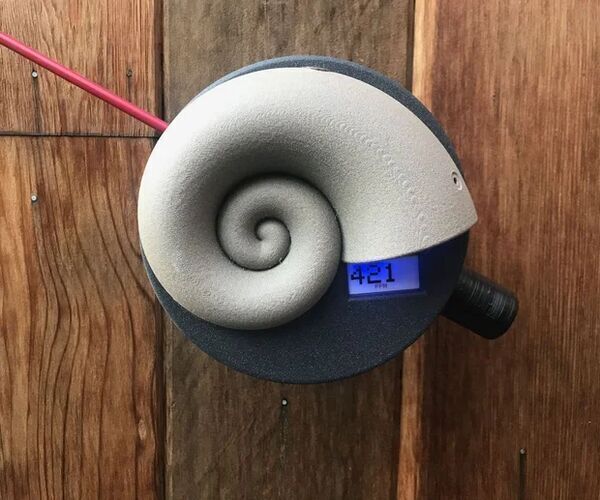
Giant Analog CO2 Meter
"The current atmosphere above a mountain in Hawaii contains about 400 ppm of Carbon Dioxide. This number is extremely important to all that live on the planets surface. We are surrounded now by either deniers of this worry or those who wring their hands in a flurry of agitated concern. But this number and the thousands of numbers that follow it in the news are hard to really comprehend on a daily basis. What is the amount of CO2 around me? How can I relate to this idea of gasses in the atmosphere causing overheating of the planet?" [...]
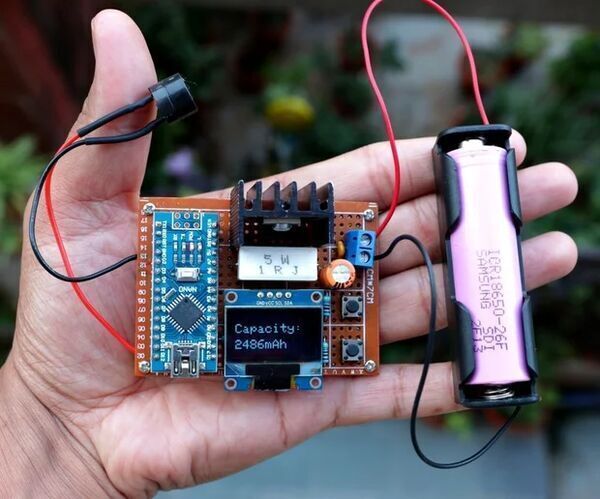
DIY Arduino Battery Capacity Tester - V2.0
"Nowadays fake Lithium and NiMH batteries are everywhere which is sold by advertising with higher capacities than their true capacity. So it is really difficult to distinguish between a real and a fake battery. Similarly, it is difficult to know the capacity retained in the salvaged 18650 laptop batteries. So, a device is required to measure the true capacity of the batteries. In the year 2016, I have written an Instructable on " Arduino Capacity Tester - V1.0 " which was a very straight forward and simple device. The earlier version was based on Ohms Law." [...]
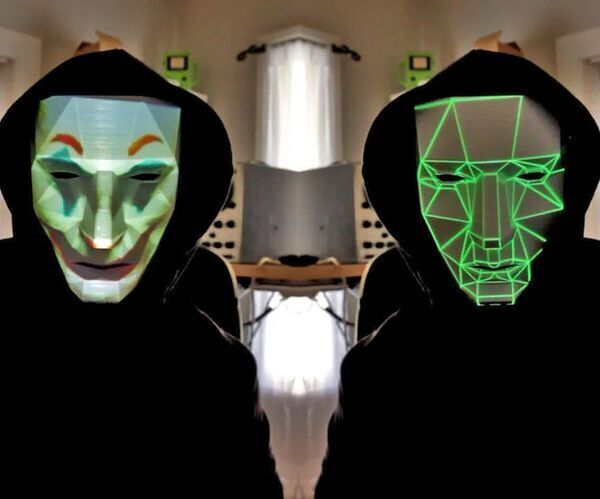
Face Changing Projection Mask - Be Anything
"What do you do when you can't decide what you want to be for Halloween? Be everything. The projection mask is comprised of a white 3D printed mask, a raspberry pi, a tiny projector and a battery pack. It is capable of projecting anything and everything onto your face. I will demonstrate some of the cool effects in my video, but I encourage you to try and come up with some of your own. Supplies: Electronics Raspberry Pi Zero W - Adafruit DLP LightCrafter Display 2000 - Digikey Custom PCB - PCBWay Anker 10AH Battery Pack - Amazon (Affiliate) USB A to Barrel Jack 5.5mm x 2.1mm - Amazon(Affiliate) 40mm Fan - Amazon(Affiliate) PCB Electronics Parts BOM - FindChips.com Hardware M3 x 8mm Hex Socket Cap - McMasterCarr M3 x 6mm Hex Socket Cap - McMasterCarr M3 Plastic Heat Set Threaded Inserts - McMasterCarr #10 Wood Screw 3/4" - McMasterCarr M2.5 x 6mm Machine Screw - McMasterCarr Welder Head Mount - Amazon (Affiliate) Binding Barrel Screws - McMasterCarr 1/2" Square Wooden Dowel - Local Hardware Store Black Matte Paint for wood and plastic." [...]
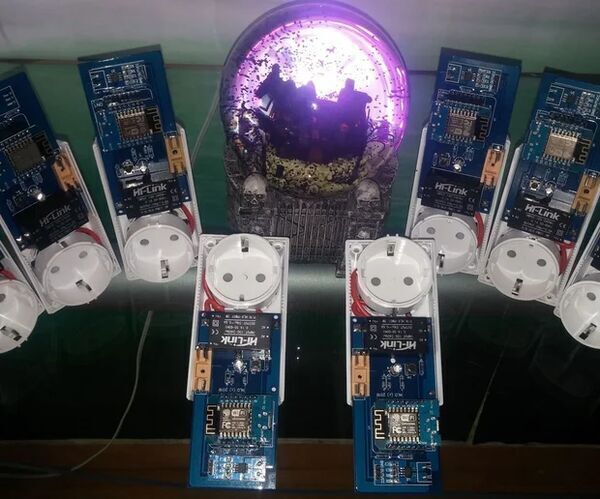
Reinventing the Wireless Plug With ESP8266
"In this tutorial I will describe how to create a secure and reliable wireless plug based on the tiny ESP8266 D1 Wemos mini for controlling appliances in your home. Cheap 433MHz Remote Controlled Switches have their advantage of being cheap and easy to use, you buy them push 1-2-3-4 ON/OFF on the remote and they just work out-of-the-box but from security point of view they are terrible, only that does not control them who don't want to. Someone can walk up to your home with 4-5 different set of remotes and with a good chance he is now in control of at least some of your wireless plugs. This by itself would not even be an issue if they would not be unreliable. 95% of the time they work but what about the 5% when they don't. That is unacceptable for engineers." [...]
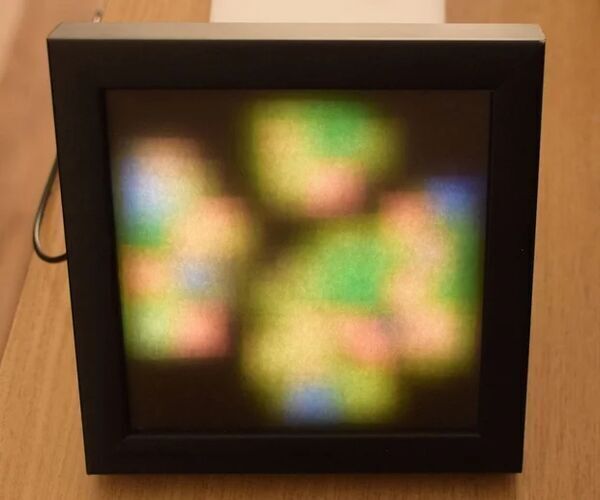
The Beauty of Math - Conway's Game of Life Art
"I've never been in good relationship with math. Especially with high school math. I don't think I'm alone with this problem, am I right? :) But I cannot deny the importance of mathematics, and when I have the opportunity, I use its results shamelessly. The same is in this article where I decided to present you an attempt to visualize some art created by math and simulated on an Arduino Pro Mini microcontroller module. For this I used a game created by a Cambridge mathematician, John Conway." [...]
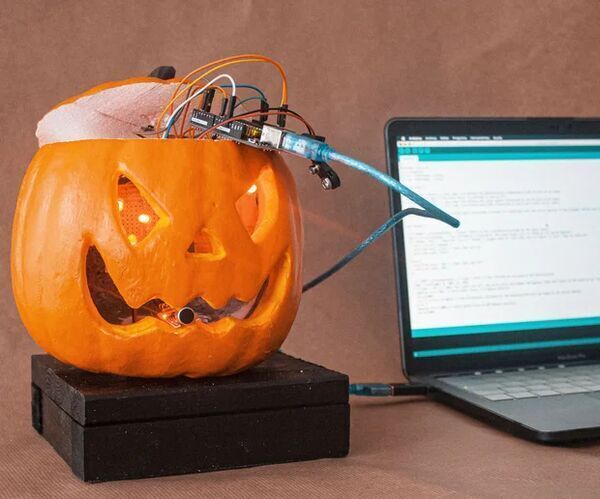
Interactive Jack-o'-lantern
"Pumpkins are usually seen as Halloween decoration, but in this project,we took it one step further away, this jack-o'-lantern responds to various external stimuli. When the lights of the room are switched off, the pumpkin rotates 90 degrees, facing the user. If the sound sensor registers loud noises, it turns the pumpkin eyes red, using three LEDs on each eye. This is a better version of a classic Halloween decoration. " [...]
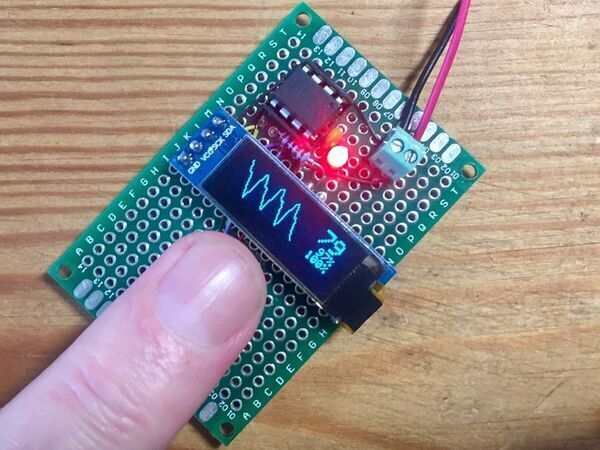
ATtiny85 Pulse Oximeter and Photoplethysmograph
"Displays your pulse rate, blood oxygen level and a moving graph of each heart beat, the photoplethysmogram (PPG). This project implemented on an ATtiny85 displays a moving Photoplethysmogram together with pulse rate and estimates of SpO2 - blood oxygen percentage. It uses an SSD1306 128x32 OLED display and a MAX30102 sensor. It is emphasised that this should not be used for medical purposes. The computation of SpO2 is very approximate and not calibrated in any way. The project is an exercise in seeing how much functionality can be implemented using a processor with only 512 bytes of RAM." [...]
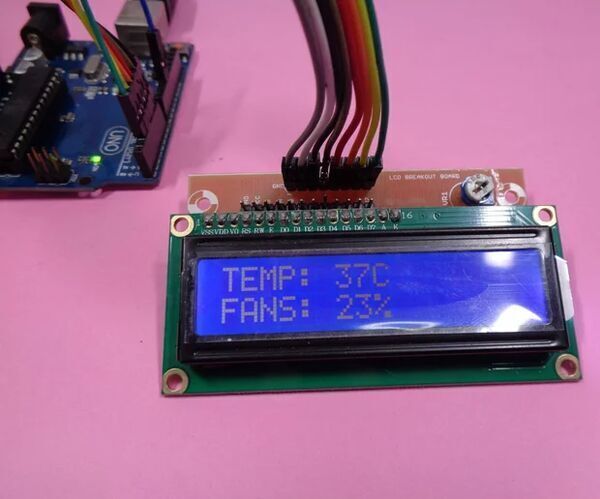
Room Temperature Based Fan Speed Control
"In this article we are going to learn how to make a Room temperature based fan speed control. This project is a standalone automatic fan speed controller that controls the speed of an electric fan according to our requirement. Use of embedded technology makes this closed loop feedback control system efficient and reliable. Microcontroller (ATMega8 / 168 / 328) allows dynamic and faster control. Liquid crystal display (LCD) makes the system user-friendly. The sensed temperature and fan speed level values are simultaneously displayed on the LCD panel." [...]
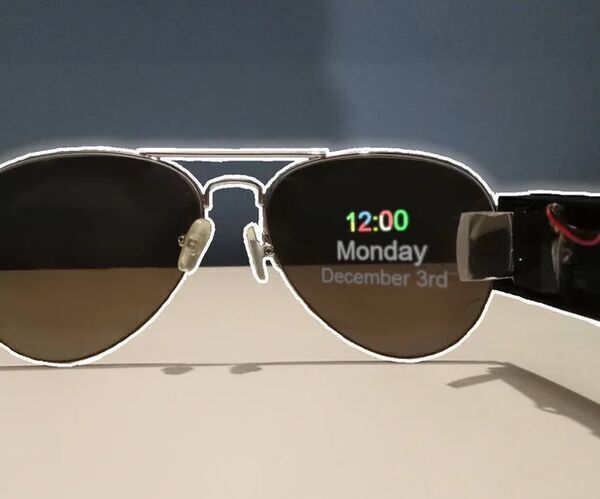
DIY Smart Glasses - Arduino/ESP
"Heyho guys! I am here to show You my DIY project and encourage You to Do It Yourself! The project is real smart glasses that everyone can make at home. " [...]
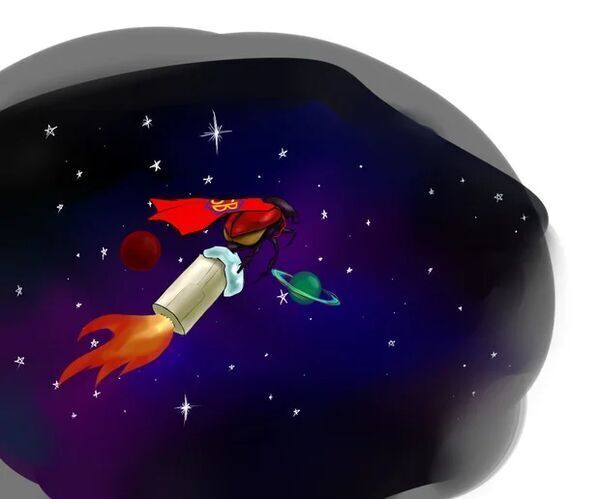
LadyBug: a Motorized Microscope and 3D Scanner for Very Small Things, Made Almost Entirely Out of Blu-Ray Players
"We're going to build a 4-axis, motorized microscope, that can 3D scan very small things. LadyBug is a picture-based 3D scanner, meaning that it's primary function is to take photographs of an object from all sides, which can then be turned into a 3D model. What's special about it is what it takes the pictures with, how it takes the pictures, and what it's made of. First, it uses a high-powered USB microscope, which is both cheap and effective --- as long as you're just looking at a tiny part of the object! LadyBug solves this by using motors to do 3D scanning on top of 2D scanning! The images you see above were actually stitched together from many sub-images." [...]
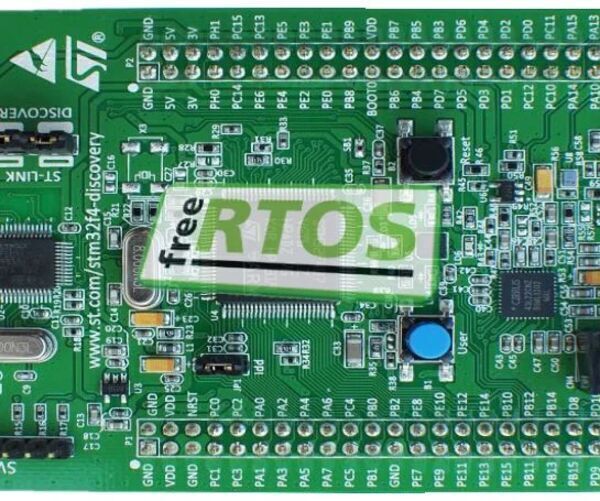
Setting Up FreeRTOS From Scratch on STM32F407 Discovery Kit
"Choosing FreeRTOS as a Real-Time Operating System for your embedded project is a great choice. The FreeRTOS is truly free and provides many simple and effective RTOS features. But setting up freeRTOS from scratch might be difficult or I can say a bit confusing as it requires some customization such as adding Microcontroller specific files, setting header file paths, etc. In this Instructable, I will guide you on how to set up FreeRTOS on your STM32F407 Discovery kit in detail using Kiel uVision IDE. Supplies: - You can find more about FreeRTOS in freertos.org - FreeRTOS download guide RTOS Source Code Download Instructions - Complete details on STM32F407 Discovery Kit Getting started with STM32F407 Discovery KIt - Github Repository FreeRTOS on STM32F407 Discovery Kit" [...]

A Halloween 3D Printing Special: DIY Bleeding Doll Head Candles
"Celebrating Halloween with 3D Printing After years of 3D printing skulls, ghosts, pumpkins, and the usual suspects, we decided to kick things up a notch for this years Halloween. We wanted to make something thats creative, terrifying, and bordering on disturbing with the da Vinci 3D printers that are sitting on our desks! After a week of getting our hands dirty (and bloodstained), heres what we have to show for it. Definitely Halloween worthy! This bleeding baby doll head candle was made with a reusable silicone mold, which was in turn created by a 3D-printed master model. One of our team members suggested making the baby dolls bleed from their eyes." [...]
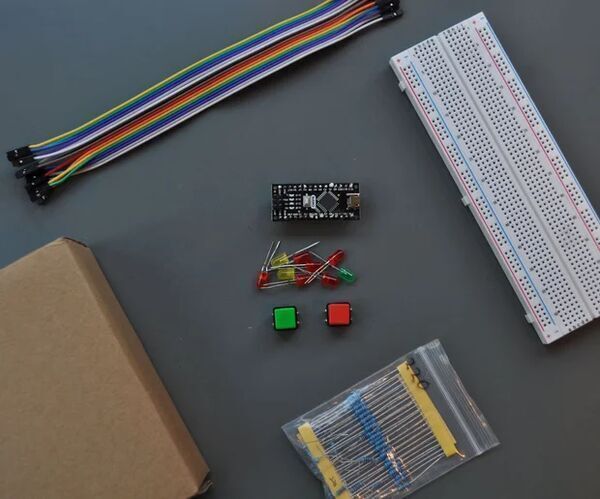
DIY Aurduino LED Game
"For this Instructable we are going to make an Aurduino powered LED game. If you have a few extra Aurduinos lying around or if you are just learning this project is perfect for you. This game is awesome for long car rides, boring sporting events, quick stress relief and family fun. The game consist of nine LEDs and the goal is to hit the green LED, the game has nine different modes(Easy-Hard). You can compete with friends and family and see who gets the best score. " [...]
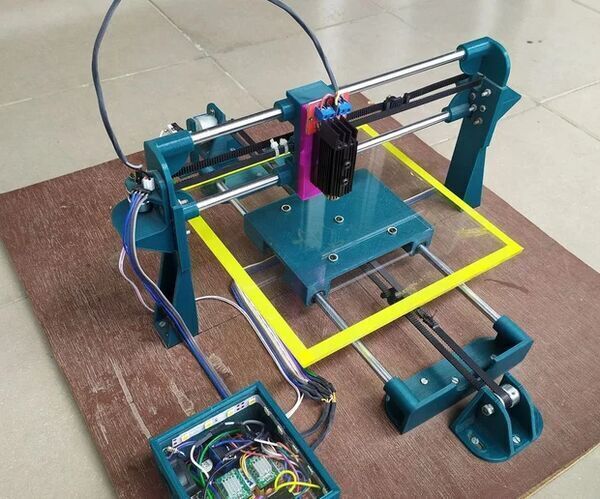
Design and build a wireless laser engraver cum pen plotter using fusion 360 and 3D printing
"A couple of months back while checking out a few laser engravers on aliexpress, I came across some USB powered laser engravers, It was awesome that these could engrave on a variety of materials and also cut out shapes and designs from sticker sheets and paper and doing all this powered by a 5V USB supply. But the downside of these engravers was that they had a small work area, in most cases just 40mm X 40mm which is definitely way too small for my needs. So I thought why not design and 3D print my own laser engraver from scratch. I started the designing process in FUSION 360 while keeping in mind all the 3D printing tolerances. And finally came up with something really cool. Along the way, I decided to make the laser holder modular so that I can easily replace the laser with a pen or marker for pen plotting." [...]
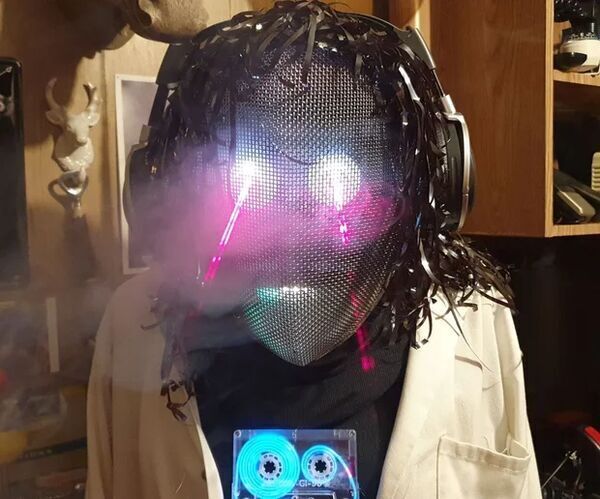
Dr. Tape Head - Undead Media
"Dr. Tape Head is the perfect spooky companion when you're working late in the lab! He uses Amazon's Polly service to read out text from a Google Sheets spreadsheet, populated by the IFTTT service and gathered from Twitter, SMS messages and camera motion alerts. He's even integrated with Google Assistant so you can remotely dictate tailored messages to spook those pesky trick-or-treaters. Between notifications his Lego-framed glowing eyes, heavy breathing and LED VU meter mouth leave you in no doubt that he's still lurking in the shadows. As he speaks his moving eyes fire laserbeams through an eerie cloud of vapour, generated by a relay-controlled USB pump and a slightly hacked e-cigarette." [...]
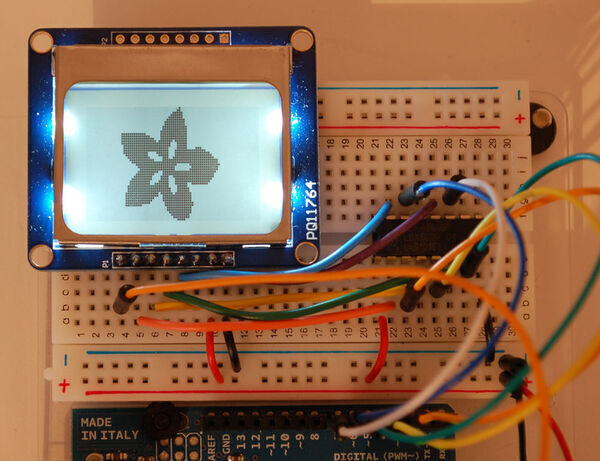
Nokia 5110/3310 Monochrome LCD
"This is a quick tutorial for our 84x48 pixel monochrome LCD display. These displays are small, only about 1.5" diameter, but very readable due and comes with a backlight. This display is made of 84x48 individual pixels, so you can use it for graphics, text or bitmaps. These displays are inexpensive, easy to use, require only a few digital I/O pins and are fairly low power as well. To drive the display, you will need 3 to 5 digital output pins (depending on whether you want to manually control the chip select and reset lines). Another pin can be used to control (via on/off or PWM) the backlight." [...]
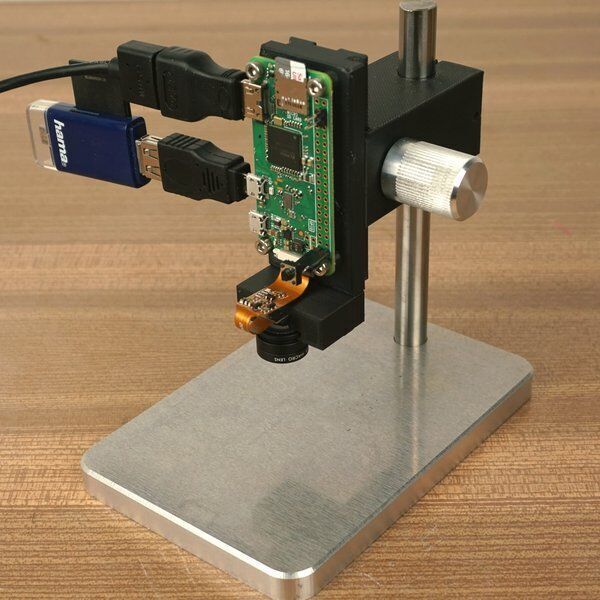
Pi Microscope
"A mostly printed digital microscope powered by a Rasperry Pi Zero W This is a low cost digital microscope that can ouput a video signal over HDMI as well as capture 1920x1080@30fps video clips. It can be modified to mount different lenses, so you can adapt it to your needs. Although I have used aluminum for the base plate and rotary knob, those could be 3D printed like most of the other parts. " [...]
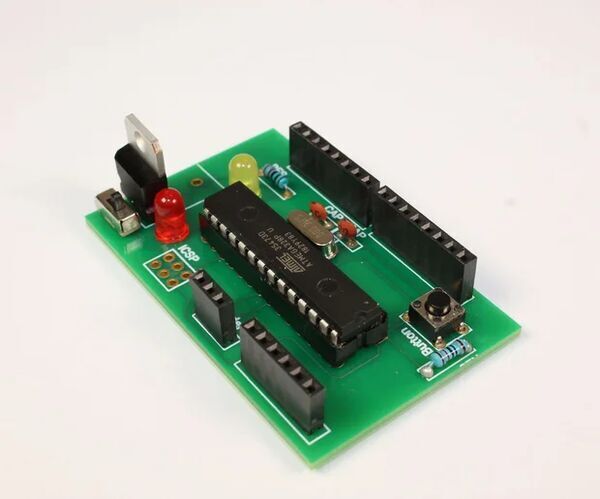
Explorer Uno PCB Template
"If youre like us, you spend a lot of time prototyping new projects, starting with a breadboard, a handful of jumper wires, and whatever microcontroller seems to be an ideal fit for our vision. But there is something about the breadboard that feels unfinished. This really left us thinking: How can we create a quicker path to PCB for all those who design with the open-source hardware we have come to love? So we looked at the projects wed built and found commonalities in the circuits, which we then used to create a pre-built, verified, ready-to-use template. Wed like to introduce you to the Explorer Uno. Our first template, based on the board that started it all, the Arduino Uno." [...]
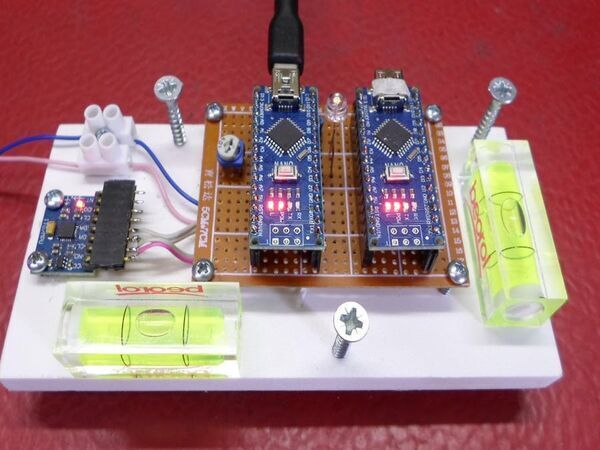
Sensitive MPU6050 Seismometer with Data Logger
"The most sensitive seismometer can be made with an electronic sensor, in this case MPU6050 module. The heart of this seismometer is MPU-6050 sensor contains a 3-axis MEMS accelerometer and a MEMS gyro in a single chip. It is very accurate, as it contains 16-bits analog to digital conversion hardware for each channel. Therefor it captures the x, y, and z channel at the same time. The sensor uses the I2C-bus to interface with the Arduino. The first part of this project is directly taken from Silicon Chip magazine March 2018." [...]
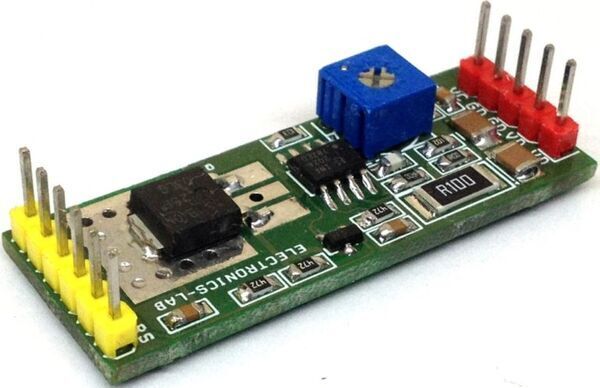
Current Limit Solid State Power Switch with Latch
"The project published here is a solid state power switch with current limiting that prevents damage to host devices from faulty load conditions. This analog current limit switch have low on-resistance P-channel MOSFET and INA202 driver IC from Texas instrument. The project operate from input voltage in the range 5V to 24V and can handle current up to 2Amps .The versatile project can be used in Smart Power applications. It is widely used to clamp the overload current, deliver constant current. The project provides 2A current, if load current increases more than set point (2amps) automatically isolates the switch. The over-current limit threshold is set to 2 Amps but it can be programmed using an external resistor R7 and PR1 and by changing value of Shunt resistor R1, refer data sheet of INA202 for more information for current adjustment and current limit." [...]
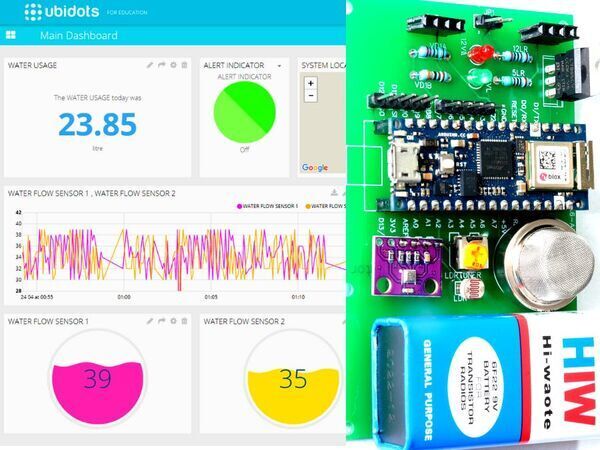
Smart Home Safety Monitor System using Arduino & Ubidots
"Monitor LPG Leakage, temperature rise, ambient light, humidity and pressure of your home, especially the kitchen in a Global Dashboard Smart Home Safety Monitor System using Arduino Introduction Guys, In this post, I will show you how you can create this Arduino Home Safety Monitor to identify LPG Leakage, temperature rise, ambient light, humidity and pressure of your home, especially the kitchen, and see the data in these interactive dashboards in real time. " [...]
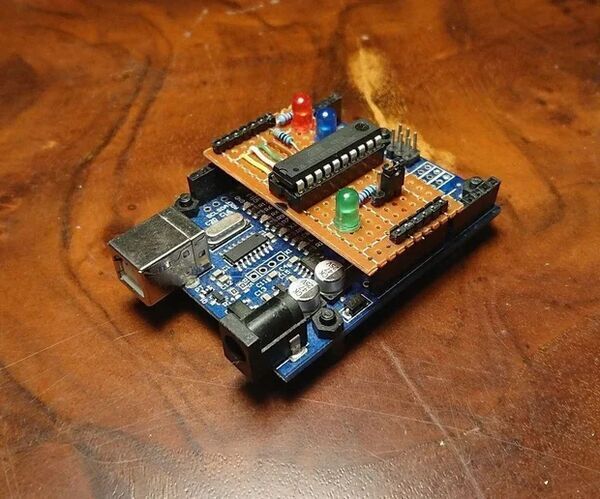
ATtiny Programmer for Arduino Uno
"If you have become confident with Arduino platform and want to try programming some other atmel microcontrollers, this guide will help you to do your first steps. In particular you will make a shield for Arduino Uno compatible boards in order to program multiple ATtiny microcontrollers (2313/4313 25/45/85 and maybe some others). Supplies:For this quite simple project you will need: -perfboard (single or double sided at least 20x10 dots) -3x 5mm LEDs -3x 220-330 Ohm resistors -20 pin socket -12 male pin headers (at least) -1x jumper -some jumper wires And of course an ATtiny microcontroller to work with (in my case it's a 2313)" [...]

Arduino Accessibility 'Around Me' Buttons & Switch Control Connected to Your Phone
"Our Goal Blind and low-vision travelers use apps such as Microsoft Soundscape and Blindsquare to build a richer awareness of their surroundings, thus becoming more confident and empowered to get around. Unlike step-by-step navigation apps such as Google Maps, Soundscape uses 3D audio cues to enrich ambient awareness and provide a new way to relate to the environment. These apps make it easy to control their features by re-purposing the regular media controls (play/pause, rewind and forward) to give important information on-demand while commuting. Though these can be invoked using media controls on headphones, it may be not as hassle free to stop using one’s cane and tap these controls while on the move. With this, we were inspired to create an ‘Around Me’ sets of buttons that enable blind and low-vision travelers to conveniently access the functions of these app and their phone with the click of these buttons. These buttons could also potentially be clamped to the cane." [...]
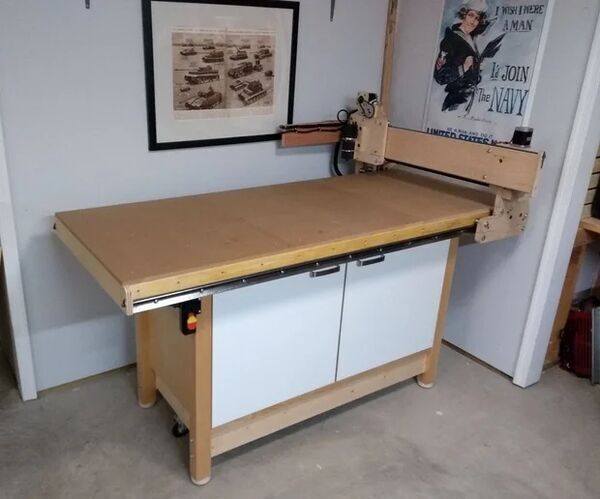
Low Cost DIY CNC Router
"In the first four days it's garnered over 20K views which really blindsided me. I guess there's lot's of CNC enthusiasts out there! If you find this article of interest please consider voting for it in the First Time Authors contest here. Thanks for stopping by! UPDATE: I've been getting many requests to publish plans for this build. I've been hesitant because I don't really have a plans set ready to go and many of the metal parts have been machined which would be difficult to replicate for someone without access to a metal lathe." [...]
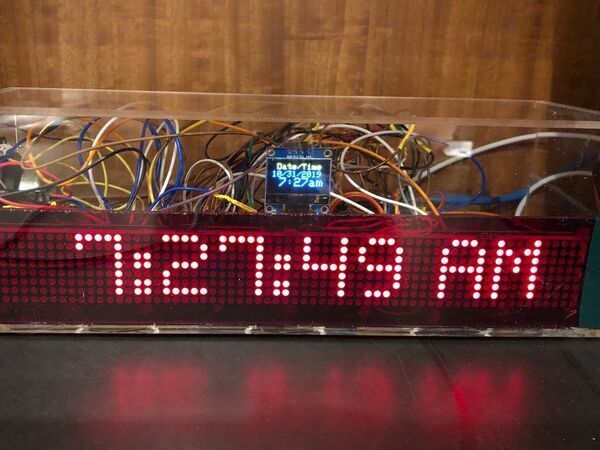
See-Through Matrix Clock
"A variant on the wooden wine box dual MX7219 matrix chiming clock. Rotating time, date, temp, humidity, day with events and chimes. In a previous project (matrix clock) most of the 'guts' for the code were done, but this continues the trend toward a more visible format. This clock takes the wooden wine box clock logic and puts it into a see-through enclosure and also uses a small OLED display to constantly show the time and date (while everything else rotates through). It uses eight LED matrix units to display time, date, day of week, temperature, humidity and events that are either static (e.g., a birthday or Fourth of July) or floating (e.g., Memorial Day). The clock also offers a choice of silence or Westminster chimes or mantel clock bells." [...]
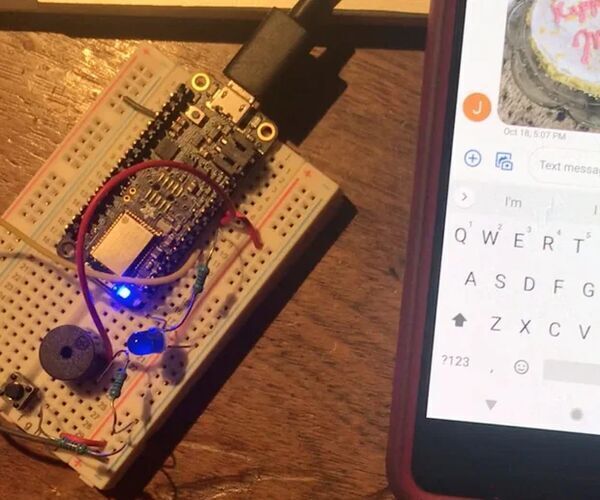
Use Arduino and a Button to Send Auto-responses to Your Phone!
"Introduction Create a button that sends a customizable Auto-Response to your phone! This project uses Arduino to create an accessible solution for quickly sending pre-determined text to an application of your choosing with a simple push of a button. An LED and buzzer provide the user with feedback so they know their message has been sent to their phone. By including both visual and auditory feedback, this project is accessible to those who have sight or hearing impairments. This project modify's Arduino's HID_Keyboard Example Sketch. *Note: the audio of the example video included is poor and does not capture the sound of the buzzer* Supplies: 1x Adafruit Feather 32u4 Bluefruit LE Arduino 1x Solderless Breadboard 1x USB Cord 1x UCM Buzzer Solid-Core Hookup Wire x2 220Ω Resistor x1 10KΩ Resistor x1 LED x1 Tactile Switch" [...]
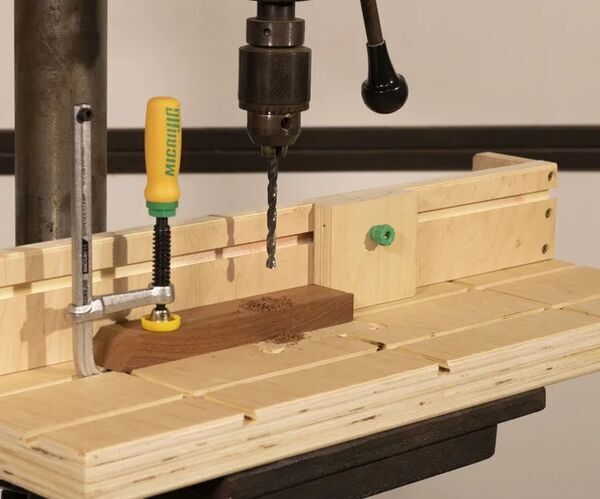
DIY Drill Press Table and Fence
"This easy to make Drill Press Table is the perfect one day shop project! The sliding dovetail system is easier to install than t-tracks and when paired with the MICROJIG accessories this table and fence system is everything that you need for your drill press stand. Cut List: Everything is made from 3/4" plywood 2 - 24" x 12" *On one section cut 3/8" deep dovetail groves at 2" and 5" off the front edge (long edge). Then cut dovetail groves at 5" off of each short edge. Optional: I cut a third vertical dovetail grove in the center of the board and stopped it at the middle point. This was for extra hold down options." [...]
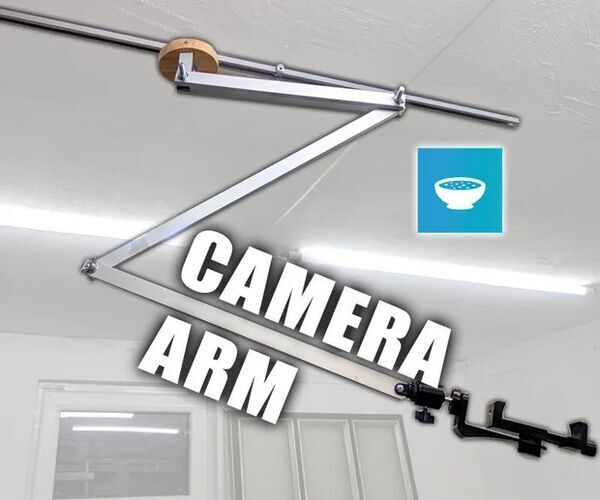
Overhead Camera Arm
"In this Instructable, Im making an overhead camera arm for my workshop. This arm will help me while filming my projects there and will provide better shots of what Im doing while staying out of the way. " [...]
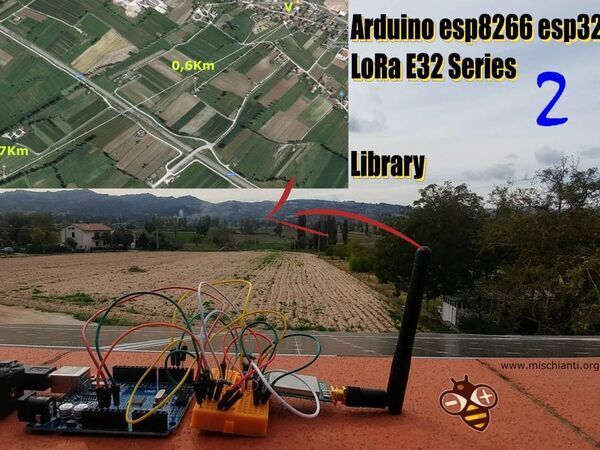
LoRa E32 Device for Arduino, ESP32 or ESP8266: Library
"My project is a library for E32 LoRa (Long Range) device very cheap and long range (from 3Km to 8Km), to simplify usage and conf. " [...]
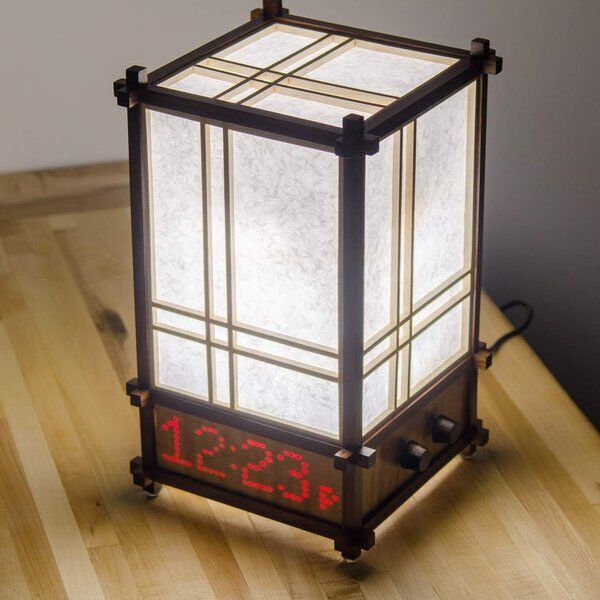
Sunrise Alarm Clock
"Alarm clock with ramp-up light and music to get you out of bed on cold winter mornings A simple alarm clock build that wakes you up with both music and light. Each of the three alarms can be enabled for a specific time and day(s) of the week, and lets you configure how fast the light and music ramps up. Auto-off after 2 hours allows you to fall asleep to ocean sounds, Finnish Death Metal, or whatever else makes you sleepy. The design is inspired by Japanese lanterns, although the methods and materials are not authentic Japanese woodworking. " [...]
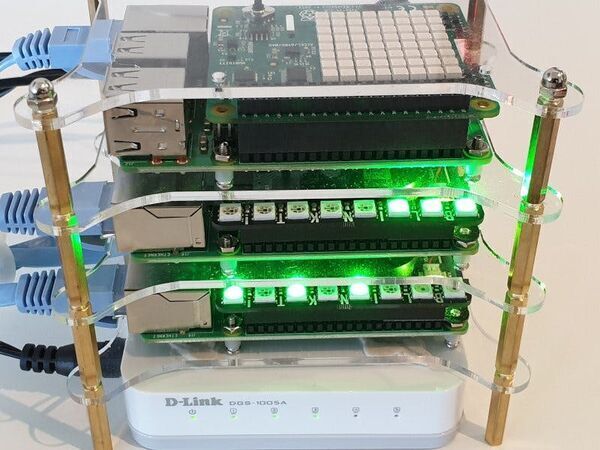
Build a Kubernetes Intelligent Edge Cluster on Raspberry Pi
"Building a Kubernetes "Intelligent Edge" cluster on Raspberry Pi is a great learning experience Building a Kubernetes Intelligent Edge cluster on Raspberry Pi is a great learning experience, a stepping stone to building robust Intelligent Edge solutions, and an awesome way to impress your friends. Skills you develop on the edge can be used in the cloud with Azure Kubernetes Service. The Kubernetes cluster is built with Raspberry Pi 4 nodes and is very capable. It has been tested with Python and C# Azure Functions,Azure Custom Vision Machine Learning models, and the NGINX Web Server. This project forms the basis for a four-part Intelligence on the Edge series. The followup topics will include: Build, debug, and deploy Python and C# Azure Functions to a Raspberry Pi Kubernetes Cluster, and learn how to access hardware from a Kubernetes managed container." [...]
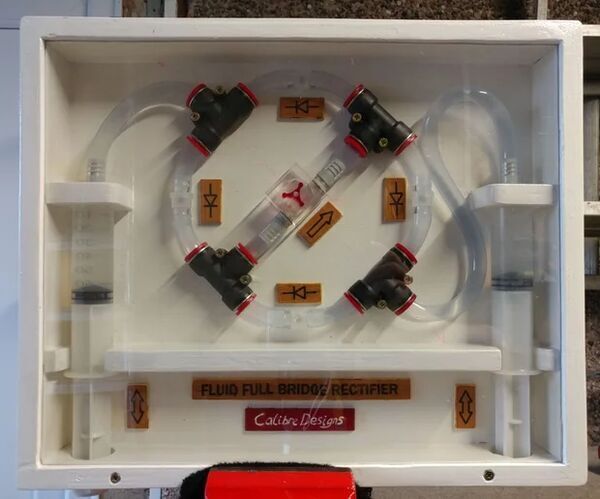
Fluid Bridge Rectifier
"This project combines woodwork and hydraulics to act as an analogy for a fairly basic, though incredibly useful array of electronic components known as a bridge rectifier. A bridge rectifier is an electronic component that converts AC current into DC current, and comprises of 4 diodes in specific orientations to ensure the output current only flows in one direction regardless of which way the input is flowing at any given time. Since the flow of electricity is difficult to visualise in the real world, explanations of how bridge rectifiers work are best suited to diagrams and videos, but this project is intended to provide a physical object for ease of understanding the concept. Supplies: - Approx. 1m x 0.5m of plywood / MDF (9-18mm ideally) - Circular saw (Though still possible with a hand saw) - Drill and spade bits - Wood glue - 1m length of 16mm OD, 10mm ID tubing - 4x 3-way 16mm OD connectors - 4x one-way valves (Check valves) - 2x syringes - 4x 10mm hosetail connectors with 1/4" BSP thread - Flow indicator with 1/4" BSP threads" [...]
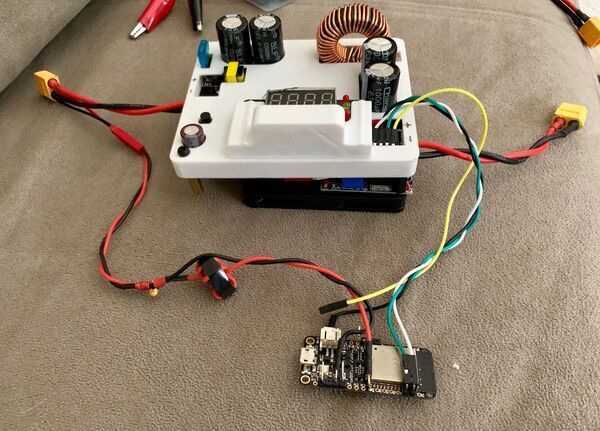
Open Solar Project Controller
"DC -> DC -> DC Solar. With a single used solar panel, a few used batteries, and $40 in parts you can power your life, transportation and all. ESP32 Arduino + DC-DC buck-converter + Solar Panel + Battery = internet-connected, privately hosted smart solar MPPT power system. What is this exactly? A solar charge controller. A cheap off-the-shelf power supply + a cheap WiFi microcontroller." [...]
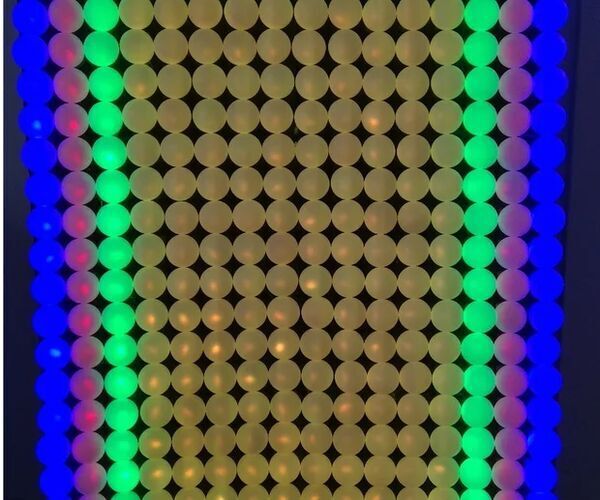
3D Printed Modular LED Wall
"This is how to very easy make a LED wall using 3D printed modules, 12 mm WS2812 led lights and 38mm ping-pong balls. However, making the mechanical construction was very complicated. Instead I designed a 3D modular system. Each module is 30x30 cm and consists of 8x8 LED. Walls and joints were also designed. " [...]
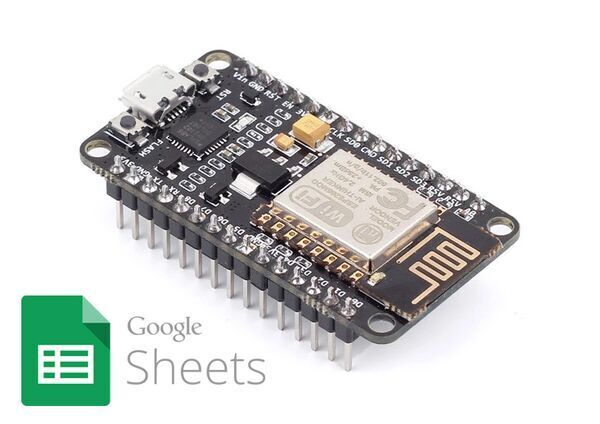
IoT: Log Sensor Data to Google Sheets using NodeMCU
"Data is regarded as the major value proposition of IoT. The ability to receive real time data from different sources, store it and process it into actionable insights to transform and optimize processes either in real time or not is of immense value. This is one of the reasons why device cloud is one of the most important (and sometimes most expensive) part of the architecture of any IoT solution/Project, since the data must be stored in a place where it can be readily accessed for further analysis. For individuals looking to deploy pilots and prototypes of scalable projects on a budget, coughing up the huge sums required for data storage on platforms like Azure, can be quite the burden, and while there are tons of free IoT platforms that can be used, they sometimes have one restriction or the other that makes them not suitable in certain situations. For today’s tutorial, we will look at a cheap/free alternative way to store your data in the cloud. We will look at how you can connect your IoT based devices to Google Sheet so to be able to log data." [...]
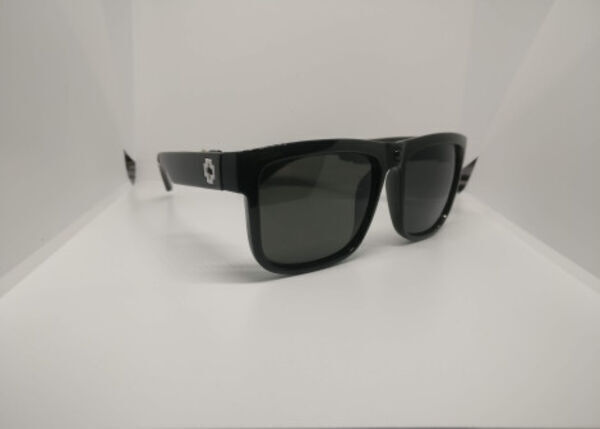
SMART GLASSES (TV B GONE EDITION)
"After finishing the WS2812 smart glasses I thought could I use this platform for different projects. I’ve wanted to make a TV B Gone for awhile now but haven’t gotten around to it. I set the challenge for myself to see if I could fit one into a pair of sunglasses, Joint me below to see if I pulled it off Hardware - Attiny85 - AAAA lipo battery - 2n2222 transistor - SMD push button - SMD switch - DD0505MD 5V Charge Pump DC DC Converter - Sunglasses - IR LED 940mn" [...]
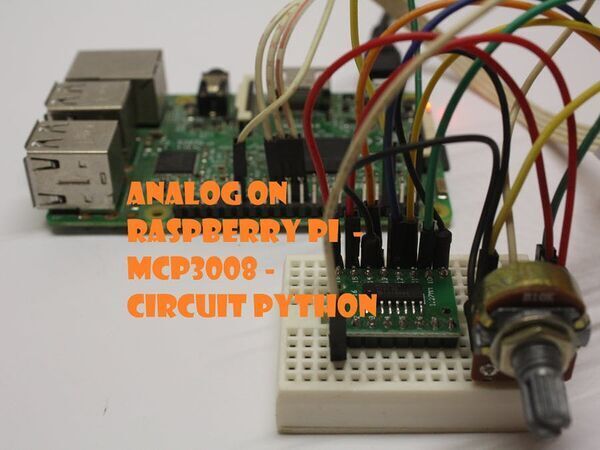
Analog Input on Raspberry Pi with MCP3008
"How to get analog input on Raspberry Pi using CircuitPython. The lack of analog inputs on the rpi and how this can be solved with MCP3008 IC The MCP3008 is a 8-Channel 10-Bit Analog to Digital Converter IC with SPI interface.The first time I used this IC was when I worked on turning a x-box drum kit to a standalone electronic drums. with the use of some python and well documented library from adafruit I was able to get it all running. " [...]
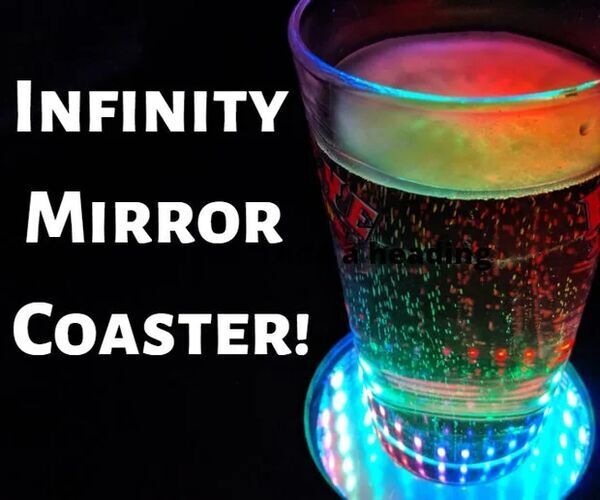
Infinity Mirror Coaster
"In this project I will show you how to build an infinity mirror coaster with a custom 3D printed enclosure! I recently found an infinity mirror from the 1980s at a local salvation army. It was broken but after adding a few leds to it, I got it working again and it looks awesome. I started looking around my apartment for an excuse to make my own from scratch and found we needed some new drink coasters so I decided to see if I could make some with infinity mirrors in them. Fast forward 3 weeks, and I bring you guys these 3D printable infinity mirror coasters. It was a super fun project and could be used as a great introduction into 3D design/printing, electronics, PCB design, and programming." [...]
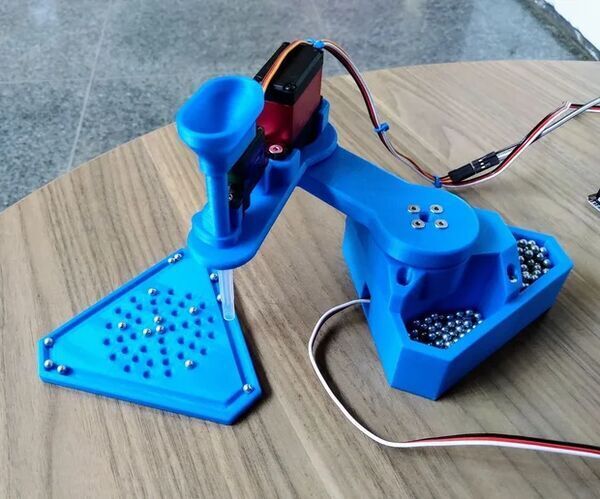
Arduino SCARA (Robot Arm): Ball Bearing Placer
"This tutorial details the construction and basic programming for an Arduino and servo based SCARA (Selective Compliance Assembly Robot Arm) designed to dispense 4.5mm ball bearings. The design is open and easily modifiable, so with only slight modification this arm could be used for a variety of other purposes. All components needed are either common off-the-shelf parts or 3D printable, so hopefully this will be classroom friendly. This arm was designed for 9-12 grade classrooms due to small components and manual wiring. Standards for Technological Literacy 12 - Use and Maintain Products and Systems M/N (troubleshoot and maintain systems) - This robot arm, while designed reasonably, will require significant calibration effort and will need to be reprogrammed and developed for other tasks, much as real robot arms do. O (operate systems) - As this arm has no GUI or simulation software it must be programmed and operated through code manipulation and mathematical prediction." [...]
NeoPixel Christmas Tree
"A colorful Christmas tree with over 50 patterns that you can control from a web browser. This NeoPixel tree is a 3D printed variant of a Laser Cut NeoPixel tree by Craig A. Lindley published in the November 2017 issue of Nuts & Volts Magazine. The base holds a ESP-01 board which acts as a Web server allowing the tree to be controlled from a Web browser. There are over 50 patterns to choose from. " [...]

5.8 Watt UV Box "The UV HotBox"
"A brighter UV-light for bar and event staff to scan customers' UV ink and ID cards. Our newest team member, Nick, is also a Bouncer for clubs and events here in Reno. He saw our powerful UV LEDs in the shop and brought over what the local clubs use. We saw that what they use is super under-powered and very directional. We therefore got the idea to make the "The UV HotBox" because these LEDs get very hot! Warning, we're moving fast here with potentially dangerous UV LEDs." [...]
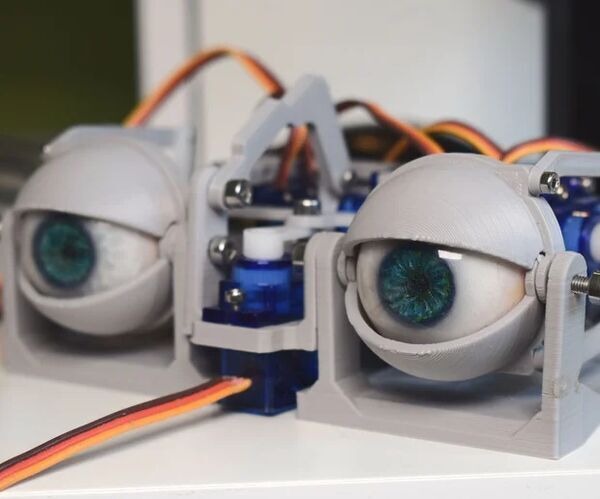
Simplified 3D Printed Animatronic Dual Eye Mechanism
"Having built a simple single-eye mechanism in the past, I wanted to improve on the design as well as making it more accessible to the maker community. The updated assembly uses parts that can easily be bought online, and almost all the components can be printed easily without supports. Designing the model in this way does sacrifice some functionality, but I'll be releasing an optimised design in the future. This project is ideal if you want to build a functional and realistic eye mechanism, but don't necessarily have access to tools like a lathe or speciality components. Another feature of this design is that it's designed to use snap-in eyes which can be replaced, and used with other 3d printed components to cast a highly realistic dome over the painted eye. This process is quite involved so I have another instructable on how to make the eyes, but if you'd prefer to use simple 3d printed eyes you can do that too." [...]
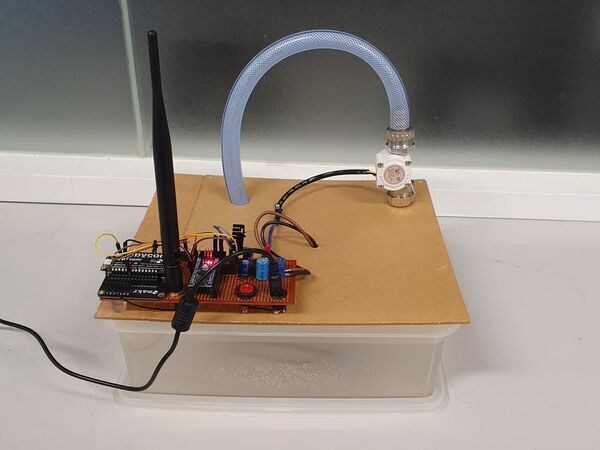
Smart Building: Household Utility Monitoring System
"Use flow rate sensor to capture water consumption in household and provide visual information via web apps. 1.0 Background: The project aims to use a flow-rate sensor to capture water consumption of a household and upload the information of water used and water bill to the web to allow residents to view them in smart devices. 2.0 Project planning: We made use of a DC pump to simulate water flow into the household. The pump speed is varied by a voltage controller to assimilate real-life conditions of varying water flowing over time. The water pump and flow rate sensor are mounted along a water piping to detect the amount of water flow into the household. " [...]
That's all Folks!



